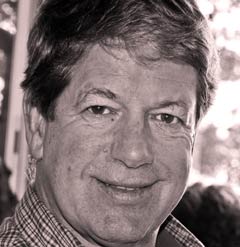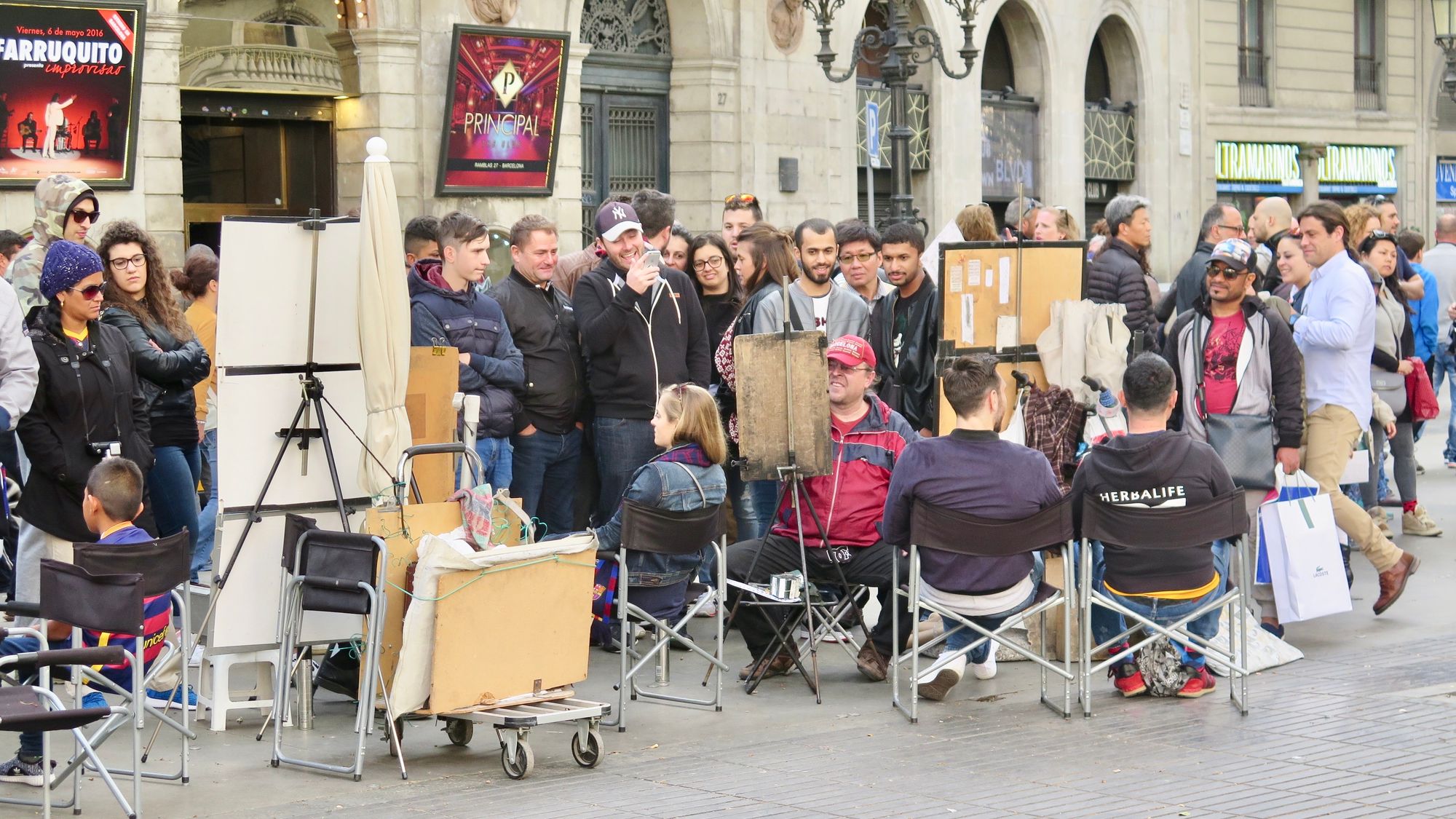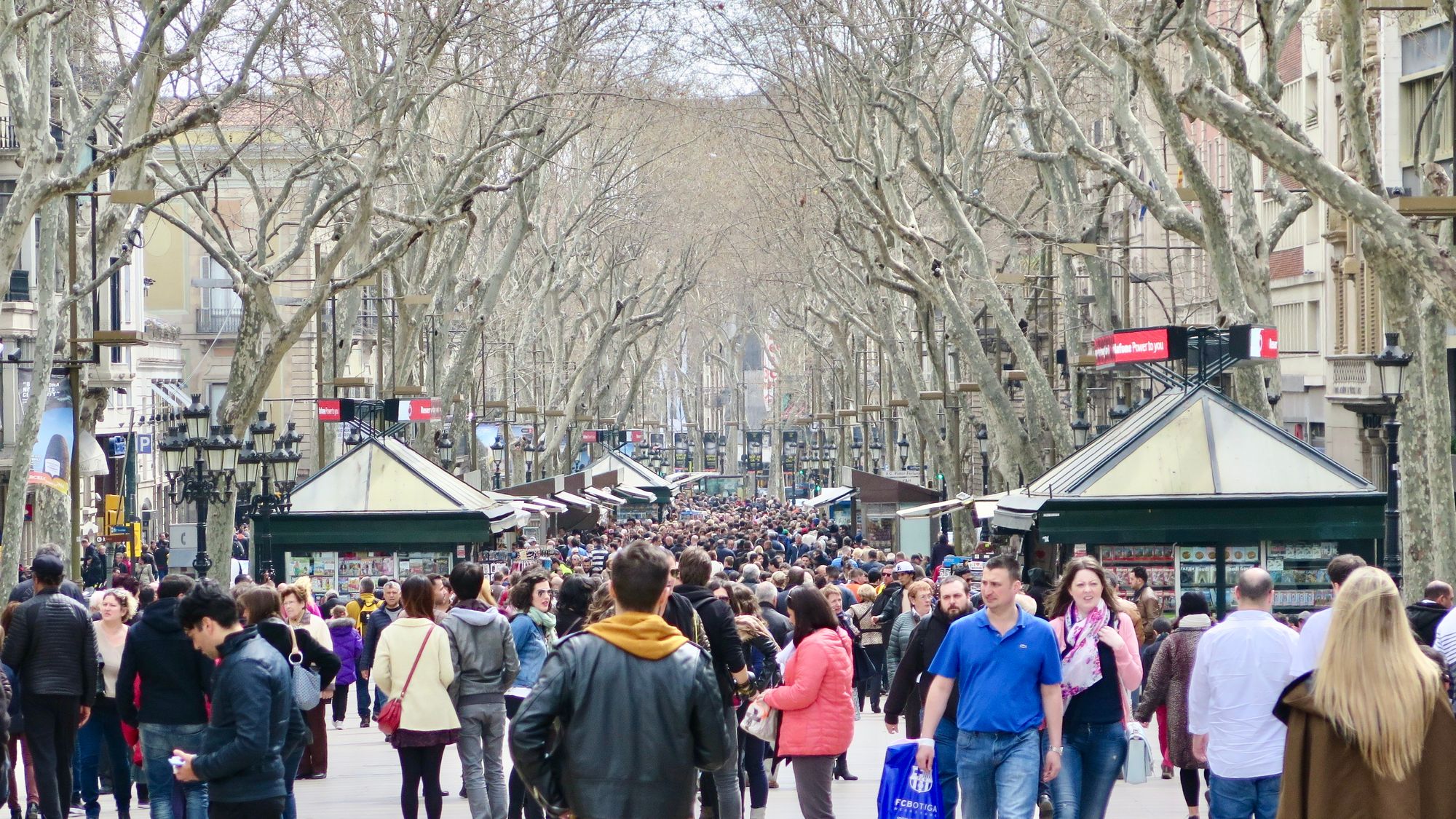
Editors' Note: In the first of a series, we celebrate Barcelona's legendary pedestrian promenade as one of the world's great social spaces. We are featuring a photo gallery along with an essay by George Semler— longtime local resident and author of many travel books on Spain, who captured the city’s essence in a previous Social Life essay "Homage to Barcelona".
A torrent of humanity, a river of life, a tumultuous flow of people of every imaginable size, shape, age, gender and flavor…Barcelona’s Rambla has been embraced and beloved by all comers from Miguel de Cervantes in 1569 (“archive of courtesy, shelter for strangers, fatherland of the brave”) to Federico García Lorca in 1935 (“the only street on Earth I wish would never end”).
There is a runway vibe loose on the Rambla, a catwalk sense of strutting whatever stuff you may or may not have—and such profound and broad diversity that it’s impossible to feel out of place or self-conscious, a venue more to see than to be seen: a place to be invisible, the ultimate freedom.
La Rambla used to be known, in the language of Cervantes, as Las Ramblas, as there are several sections, five to be exact, plus the new Rambla de Mar boardwalk leading across the port into the Maremagnum complex. Now that Catalán is the co-official language in Barcelona, Rambles, the correct plural of Rambla in Catalan, is misleading to the Anglophone, resembling a verb meaning to wander, stroll or range freely. People imagined (I did) that La Rambla was so-called because it was a place to ramble, wander, flâner, but the word really comes from the Arabic for sand, rmel, as it was originally a dry and sandy watercourse. These days, English speakers generally call it La Rambla.
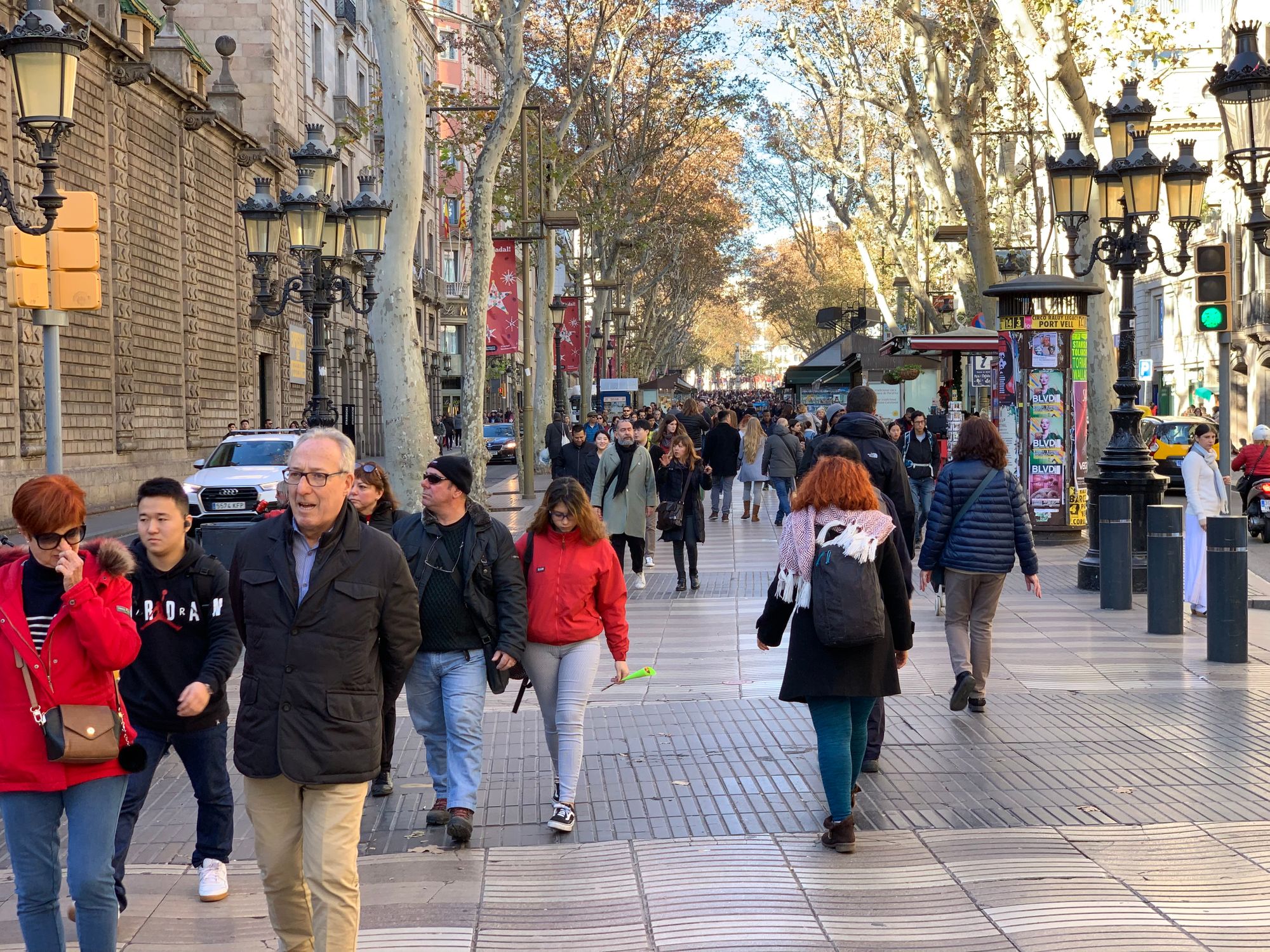
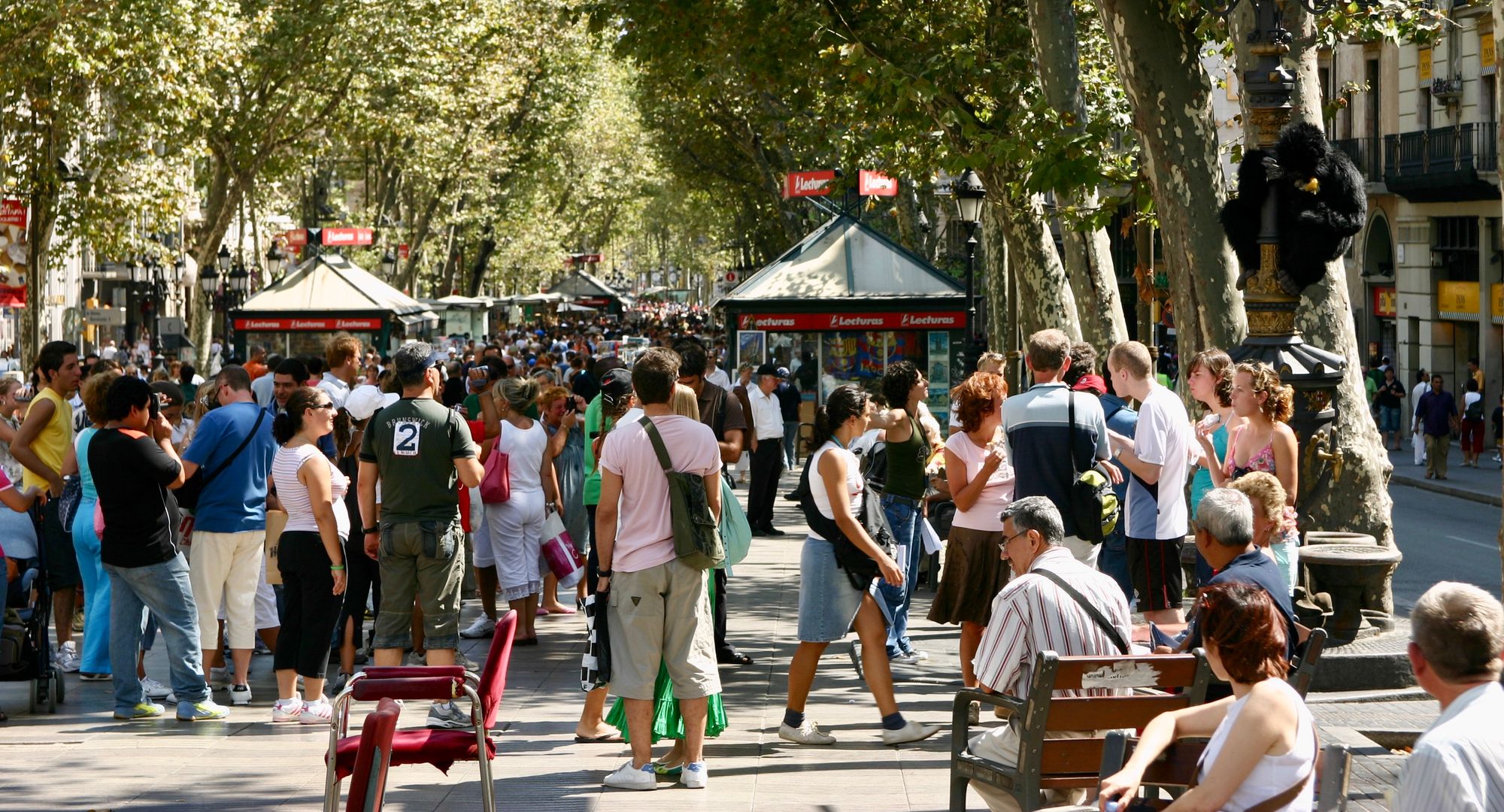
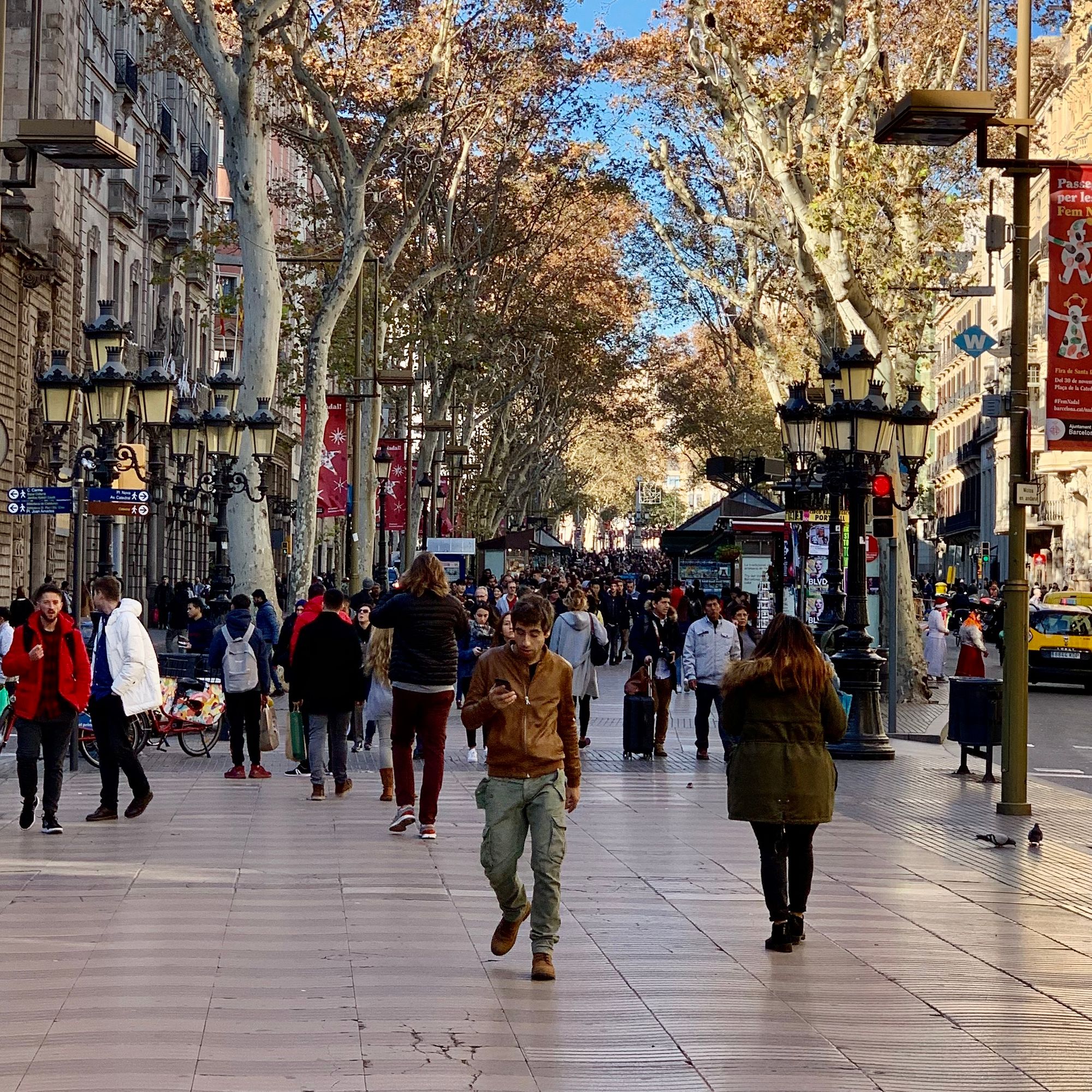
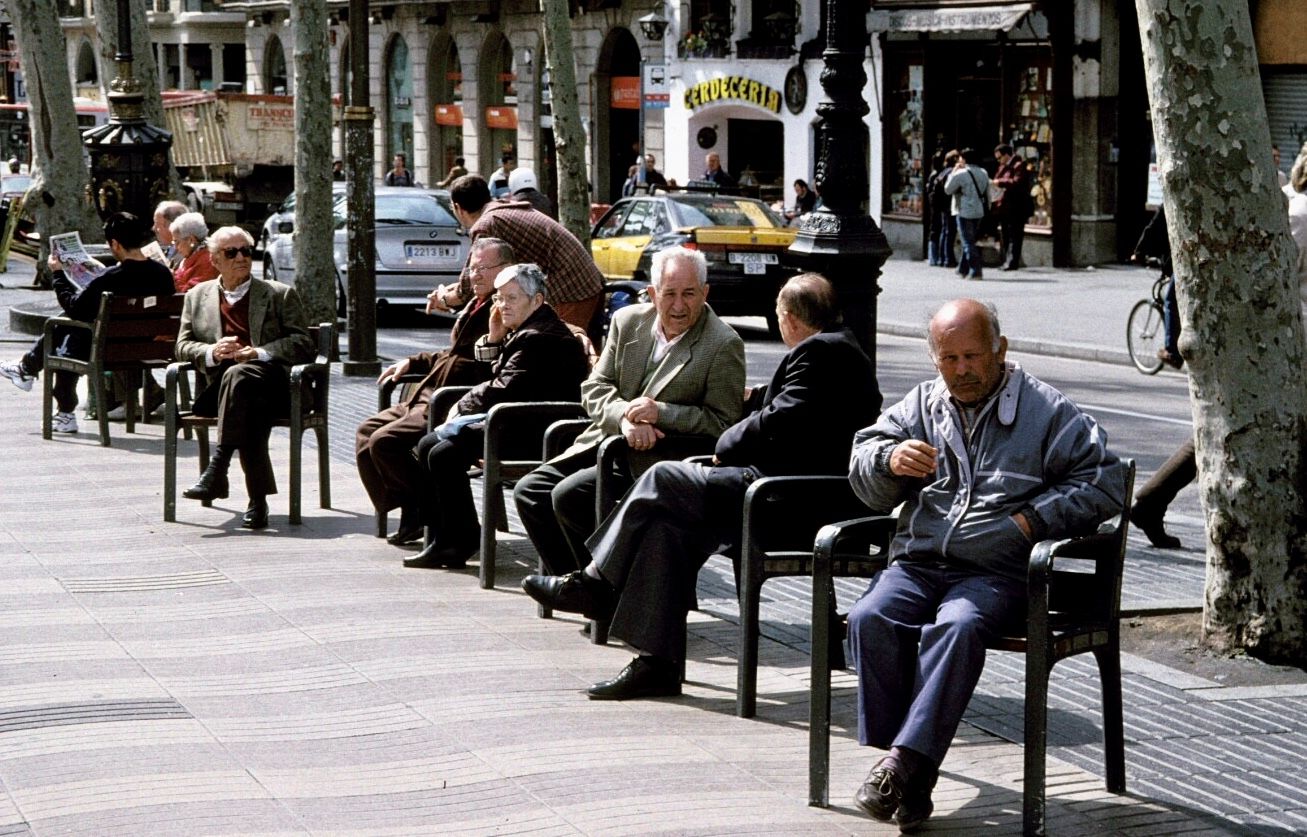
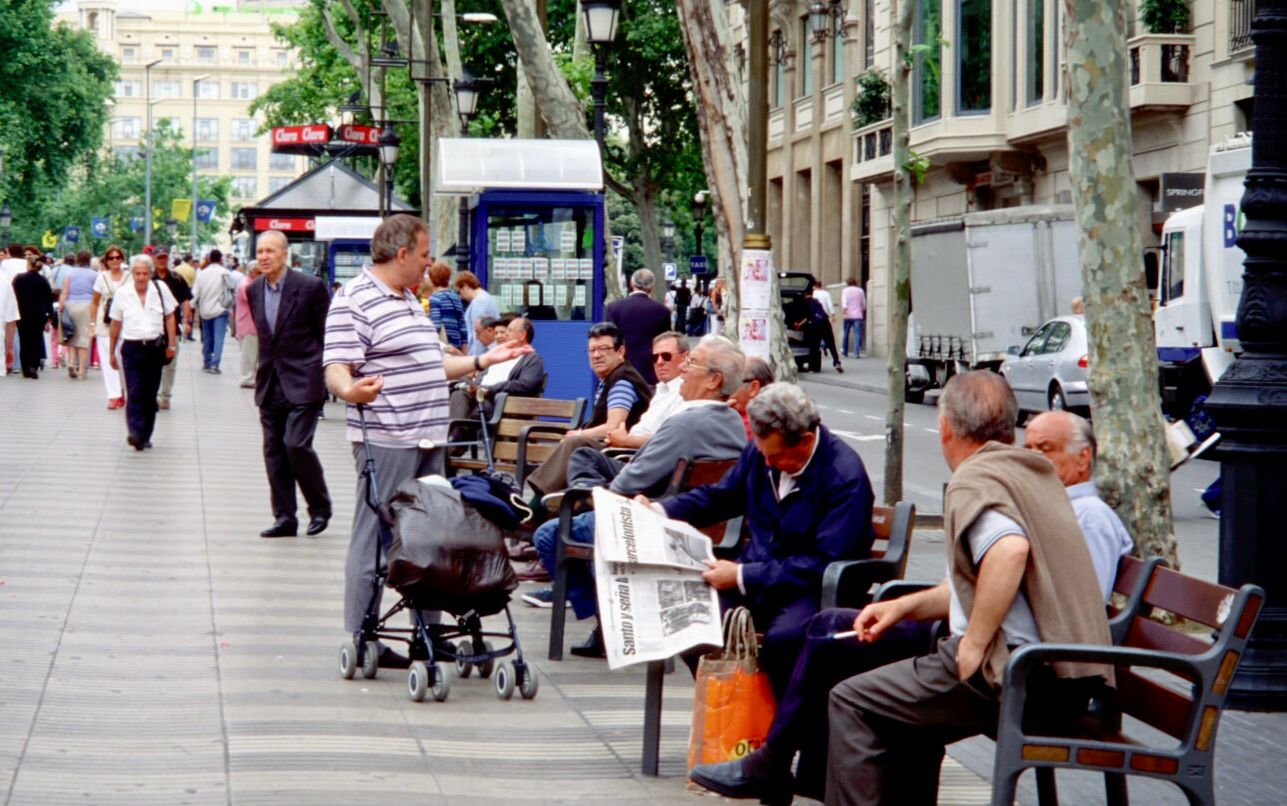
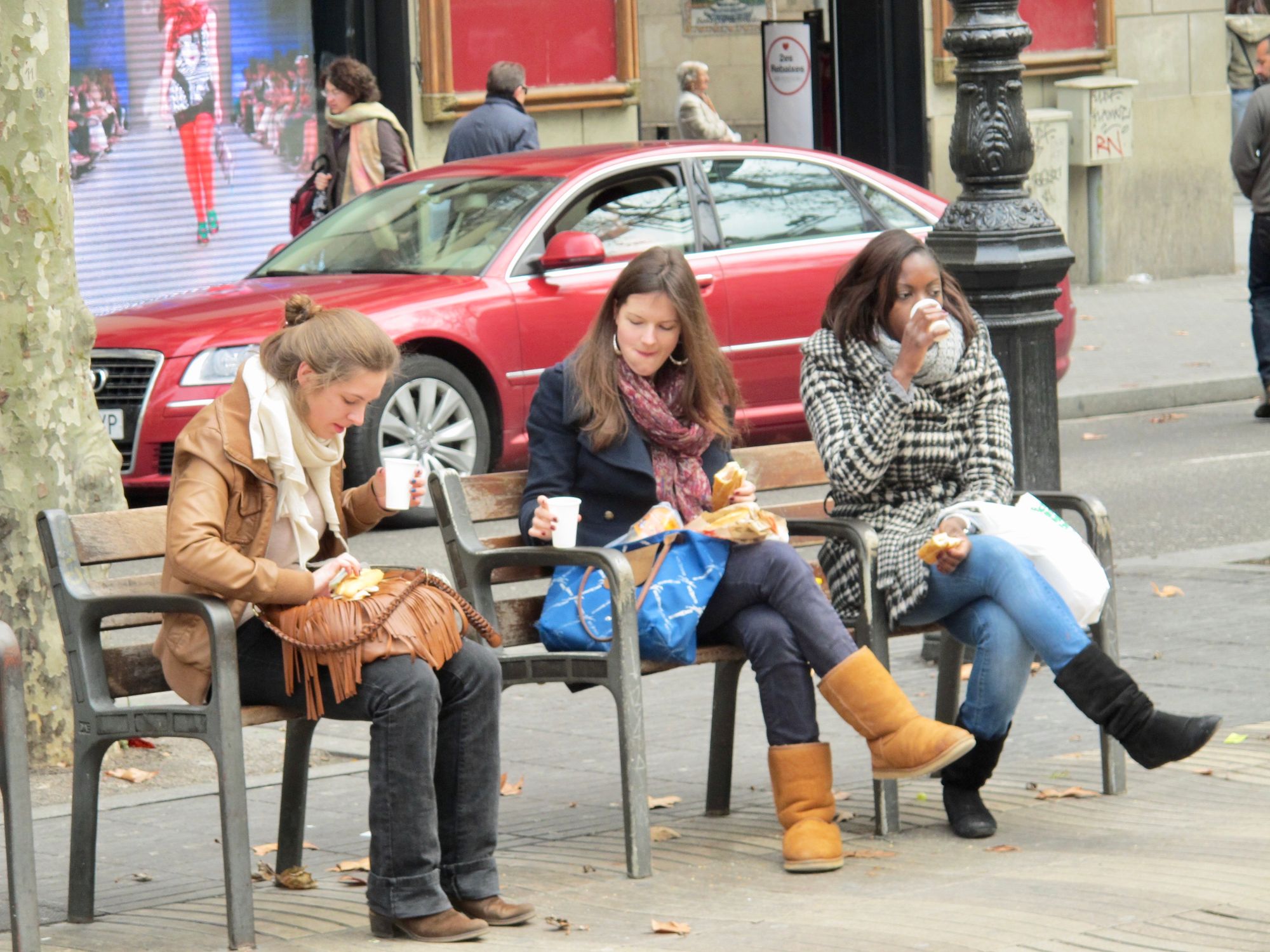
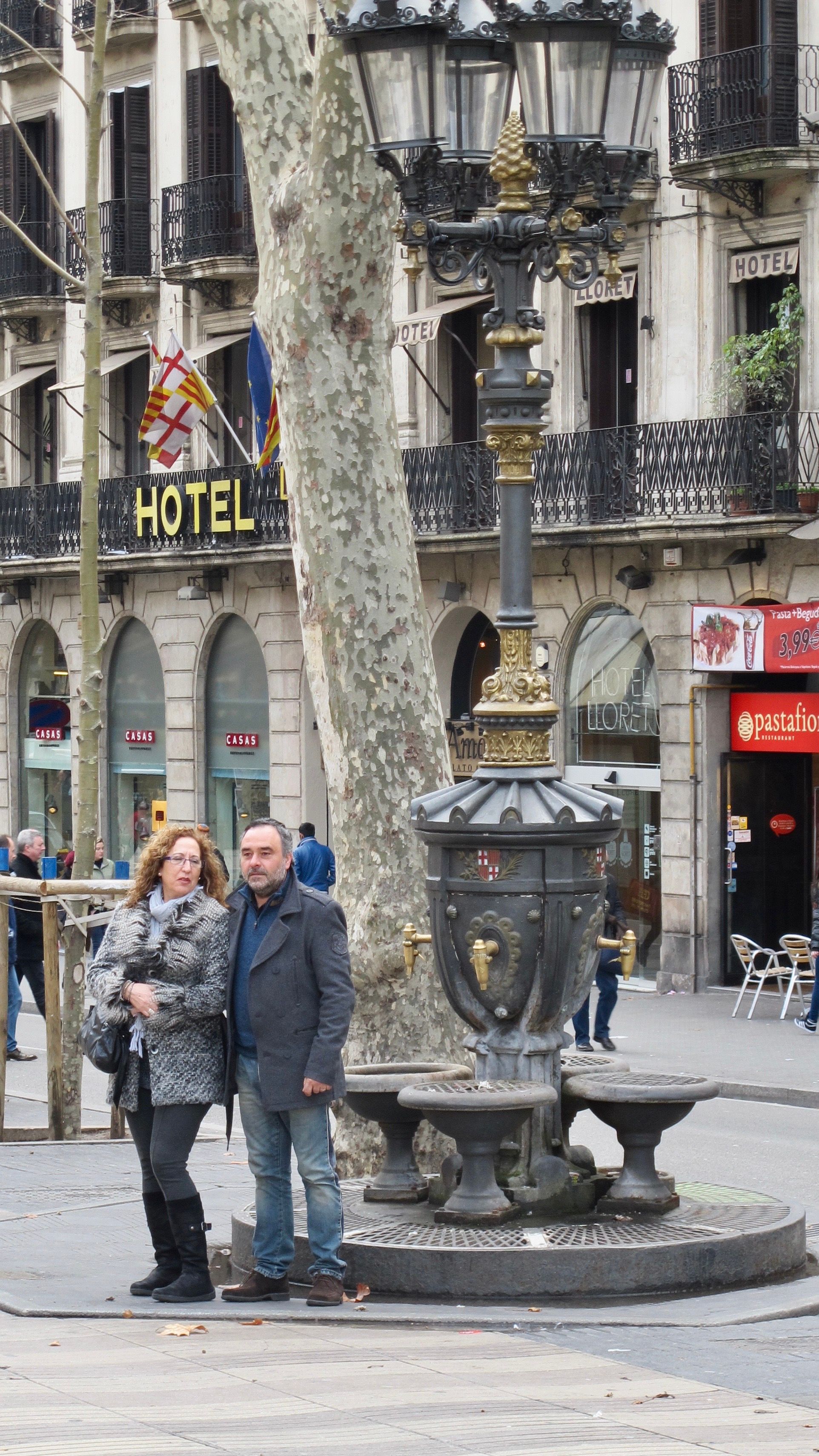
Seating is plentiful along La Rambla—a common characteristic of all great social spaces
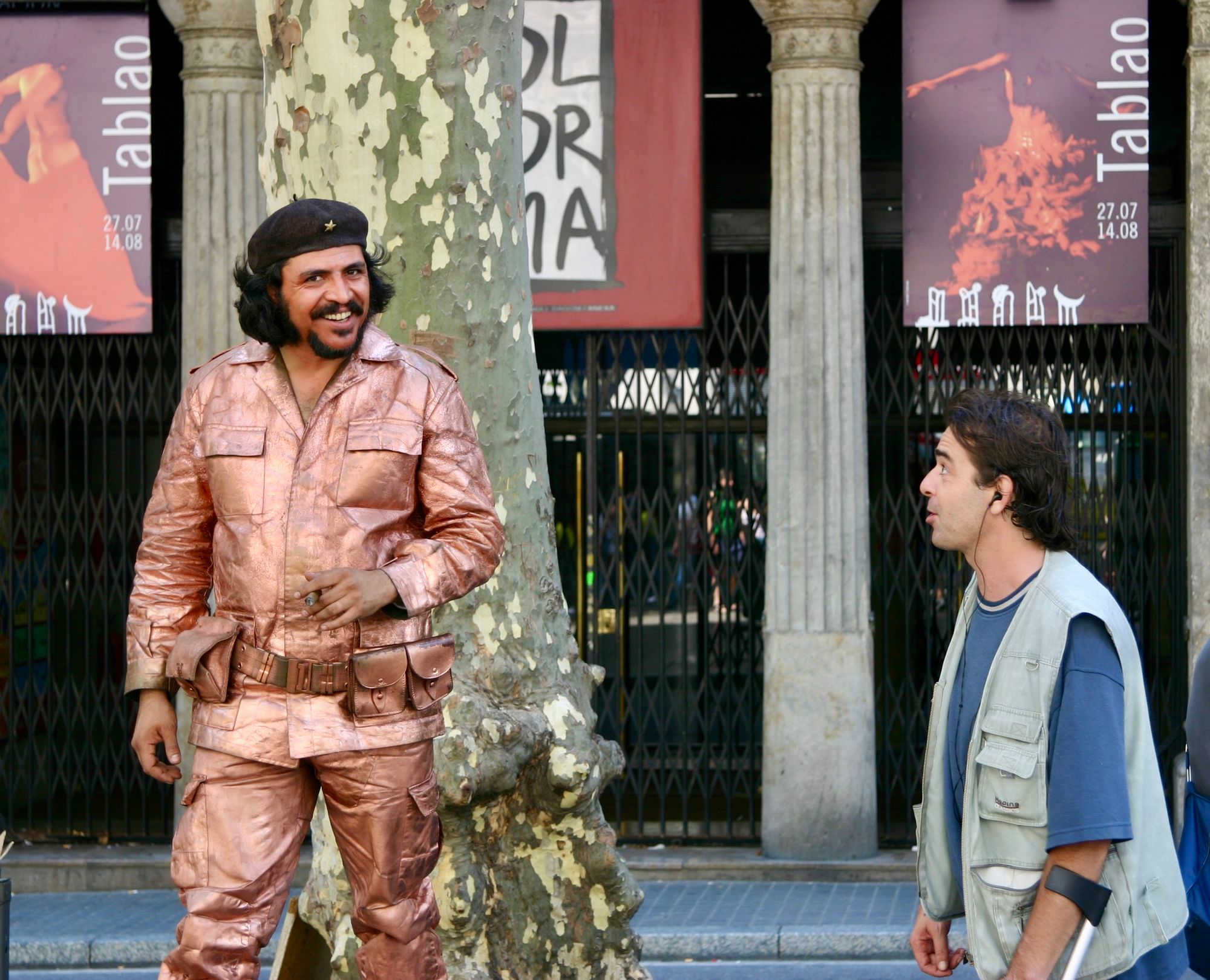
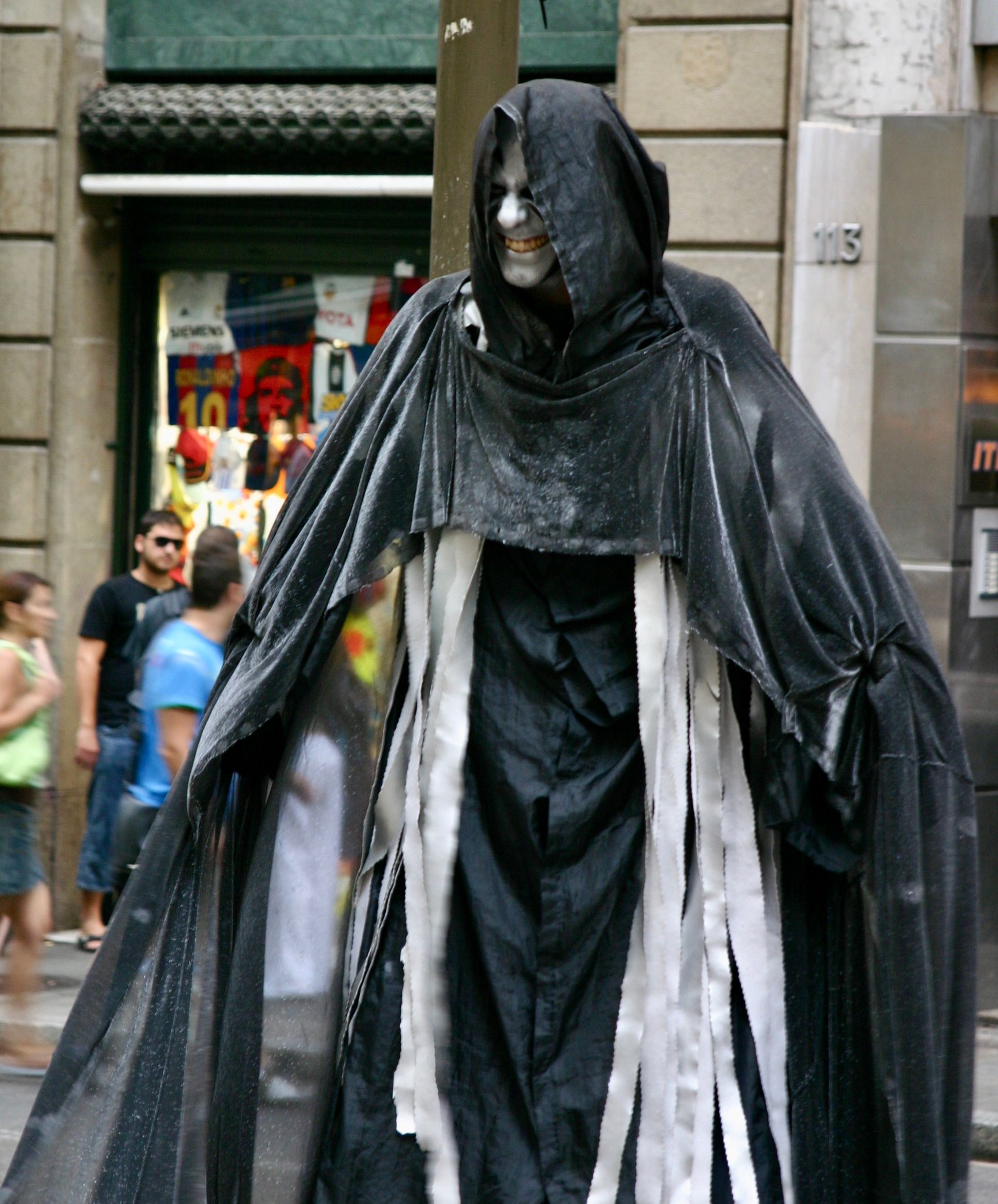
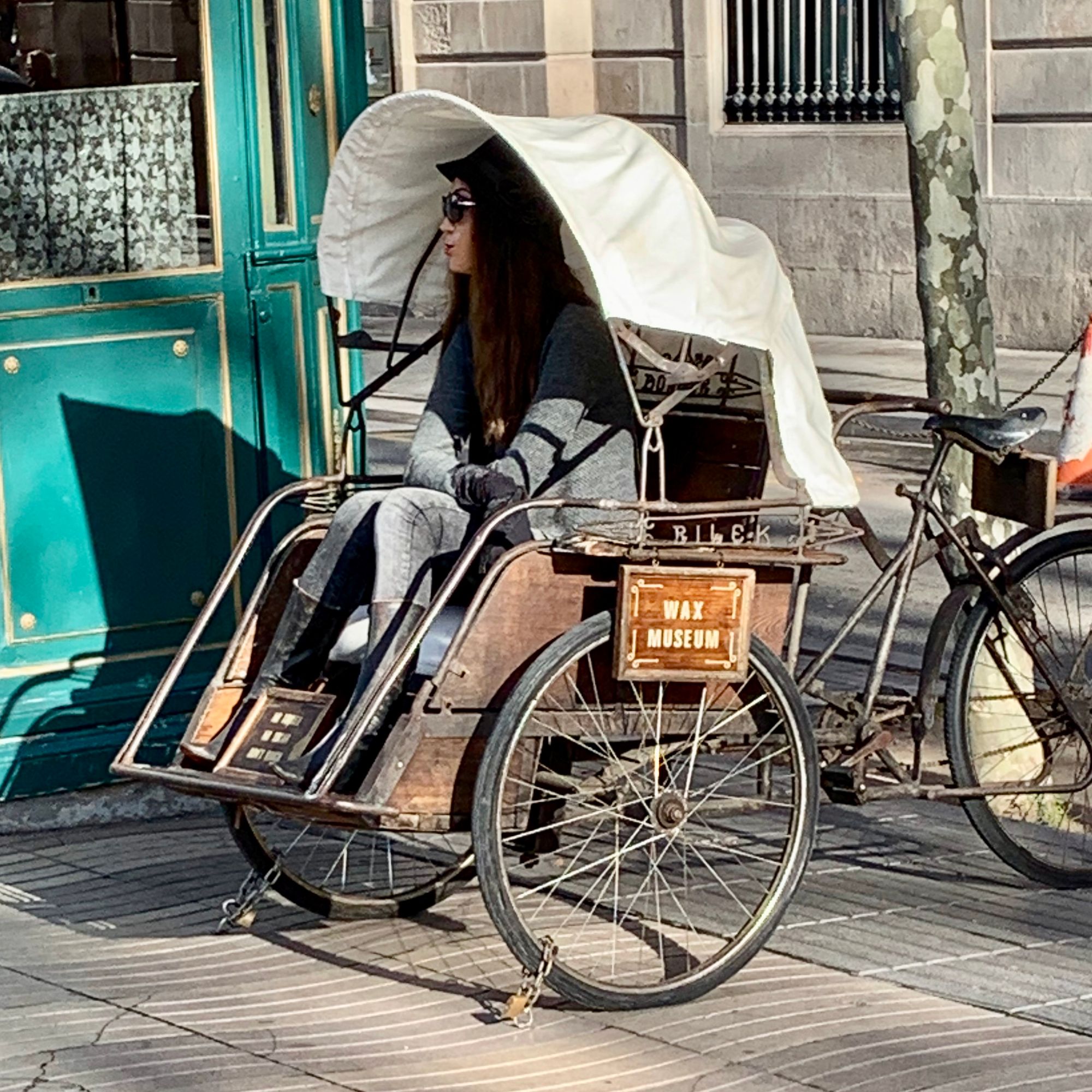
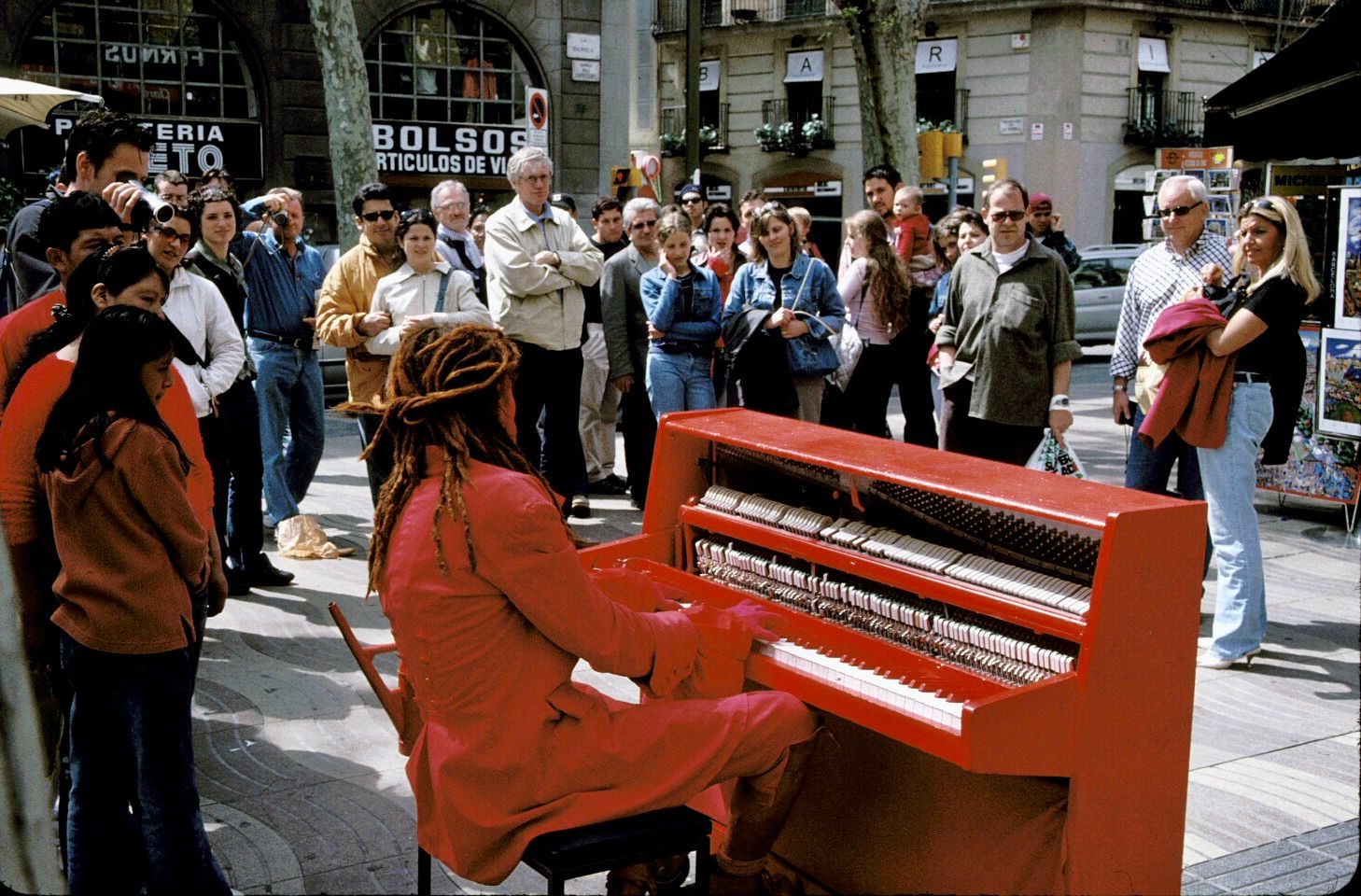
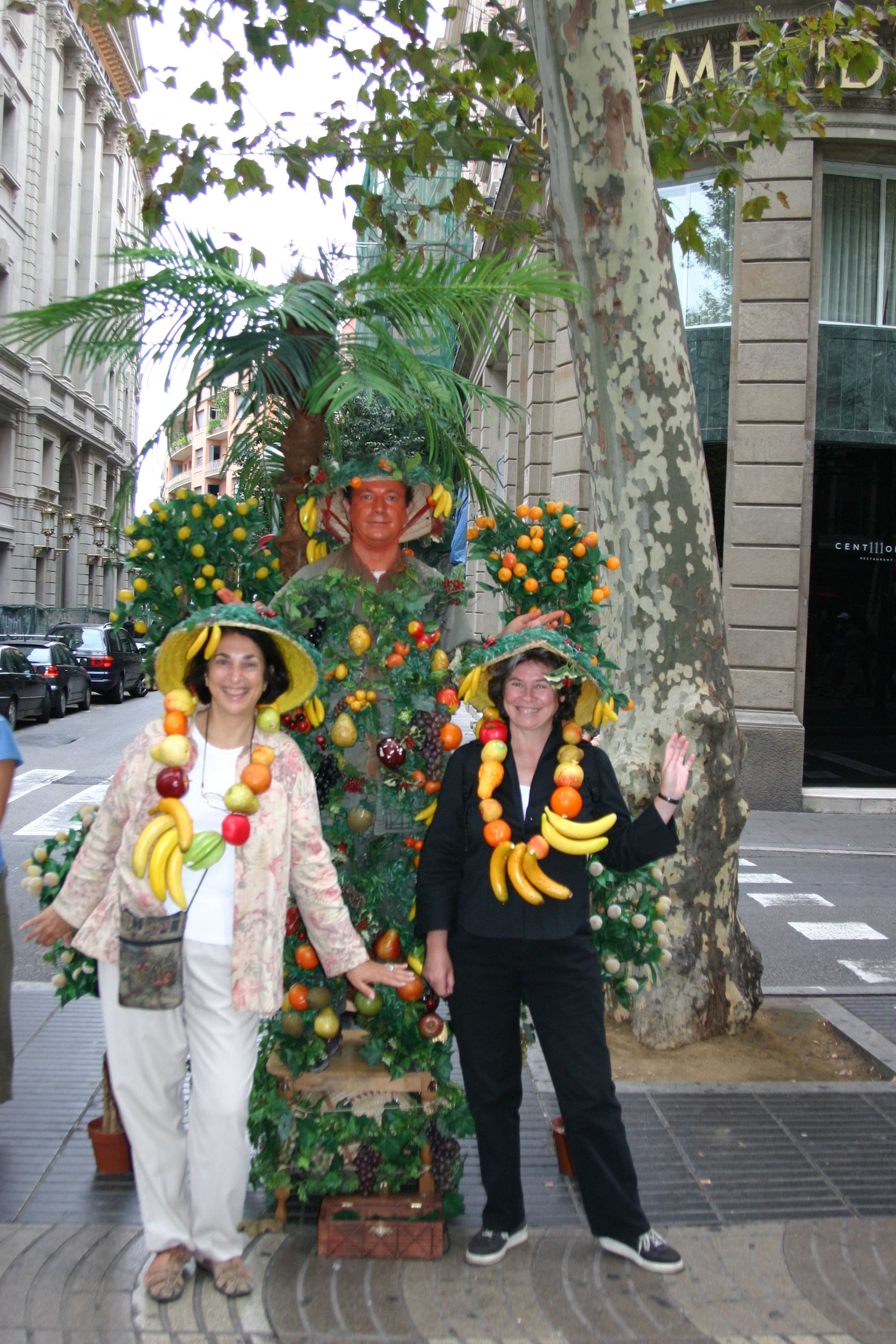
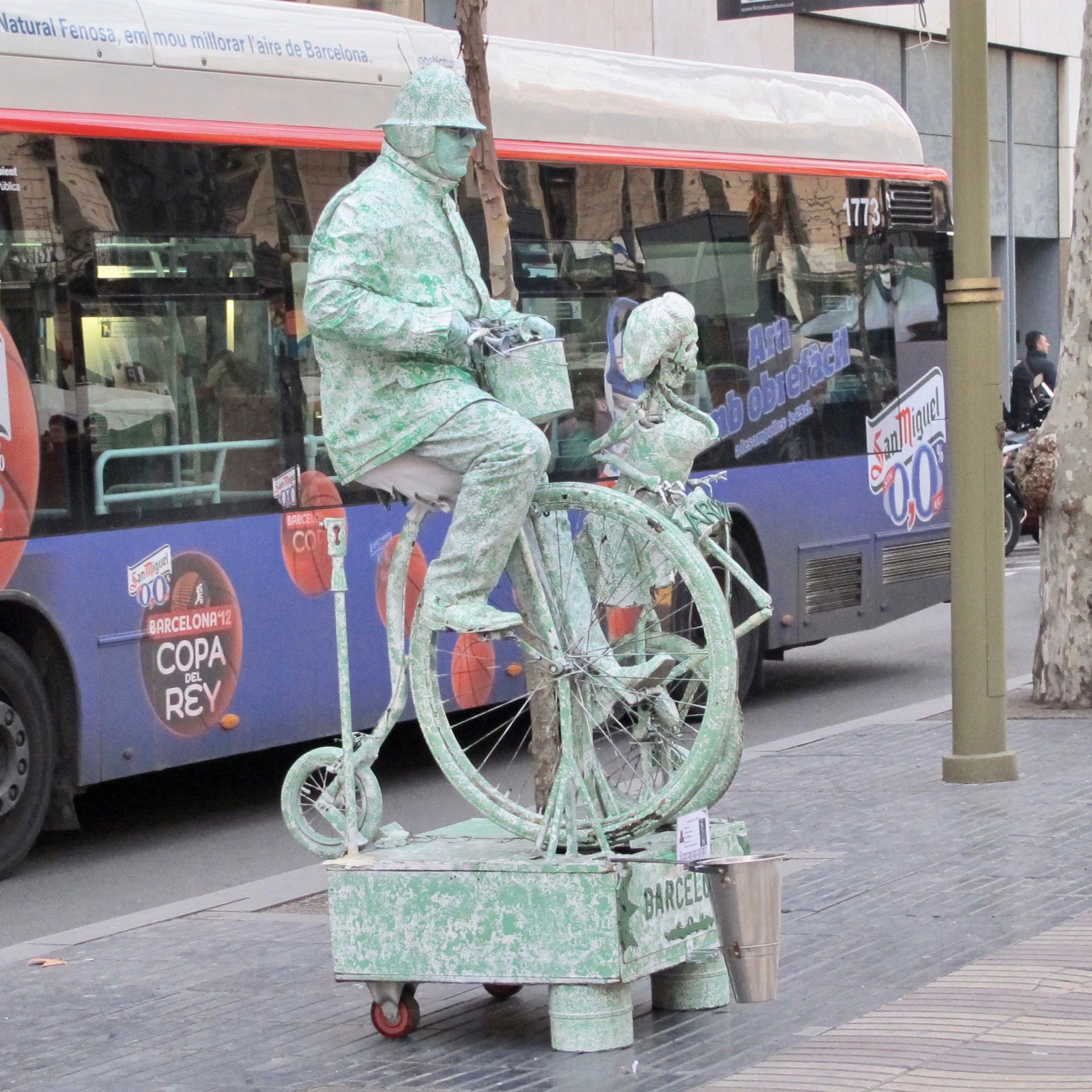
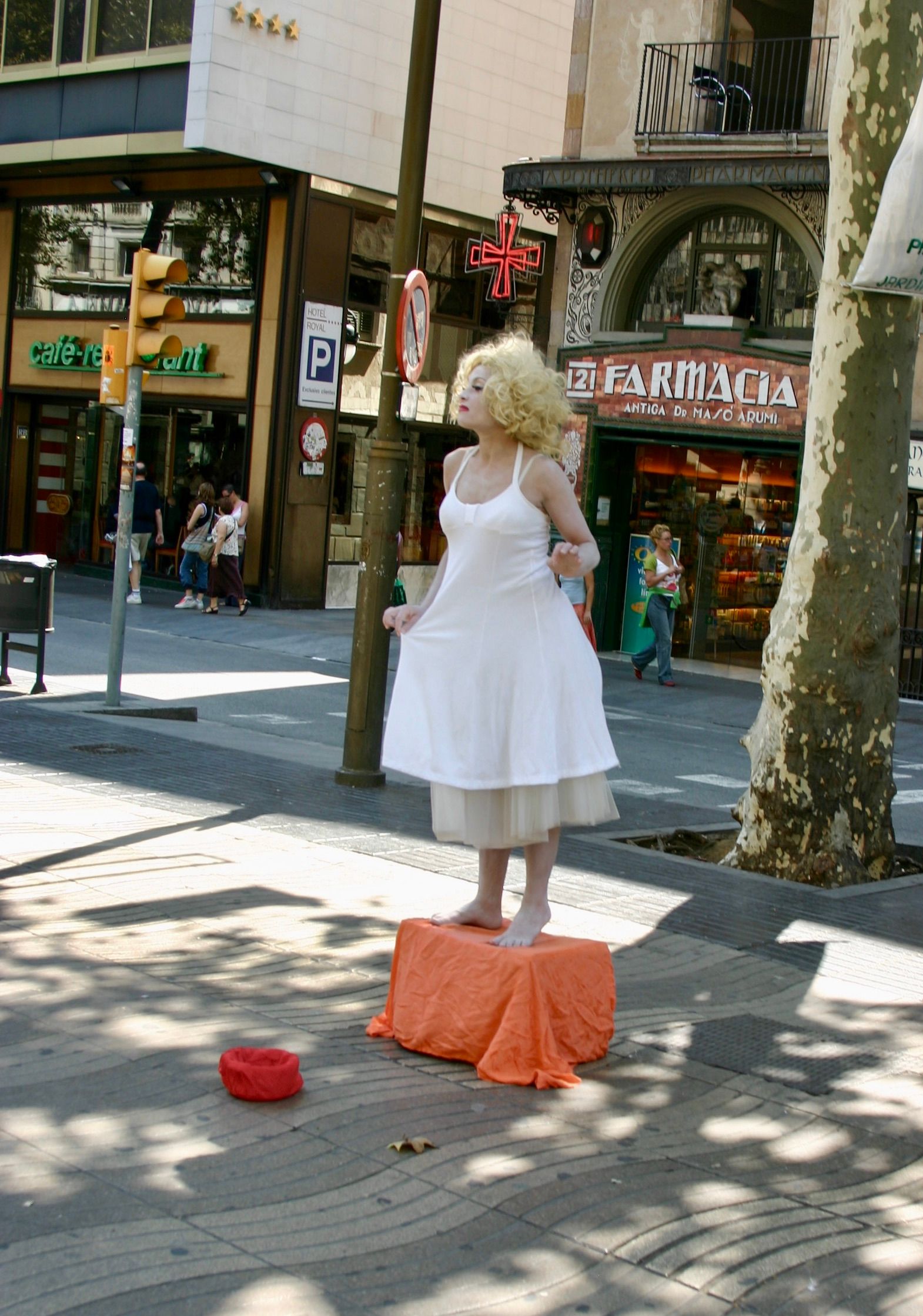
A showcase for some of the world's most accomplished street performers
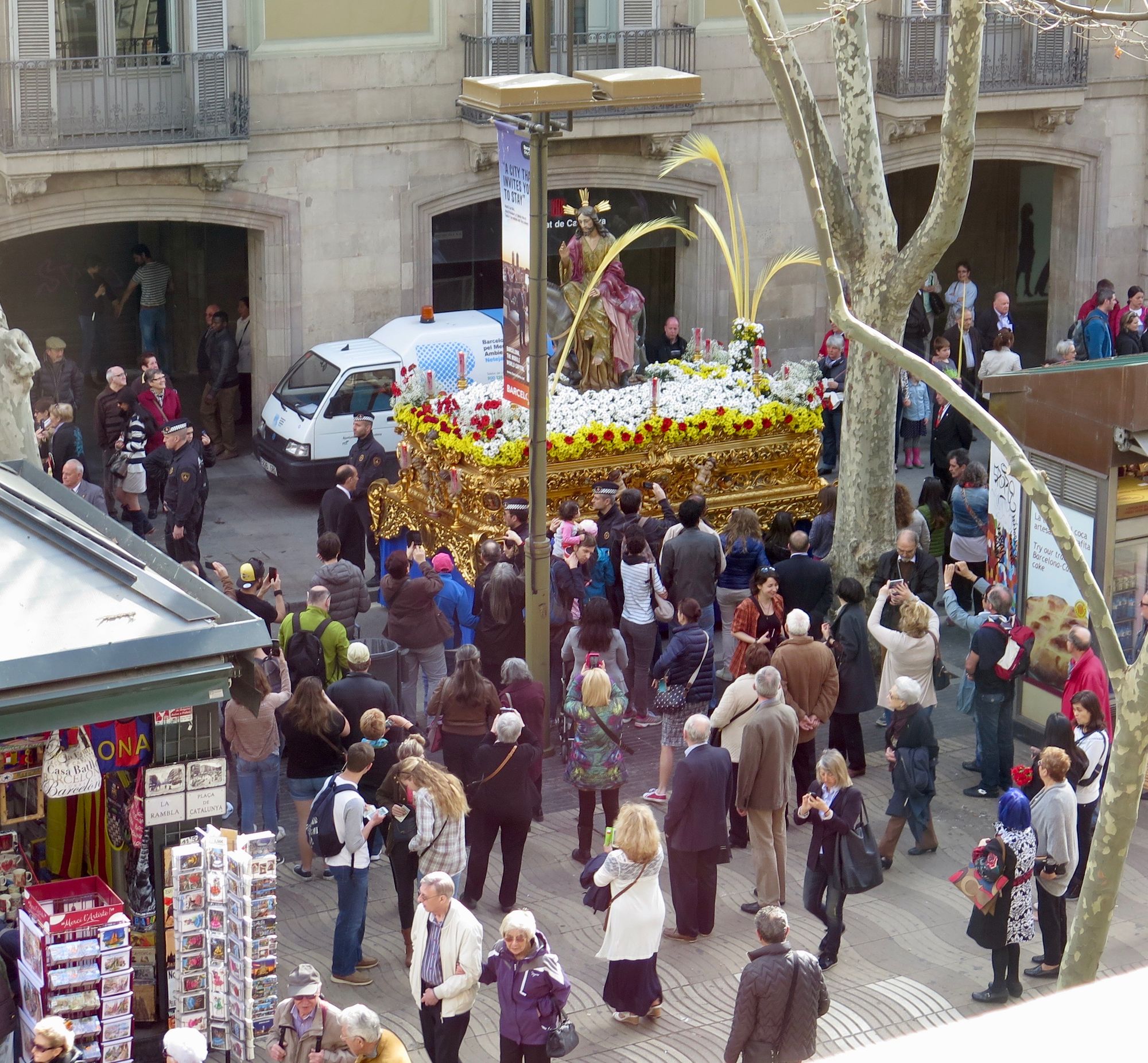
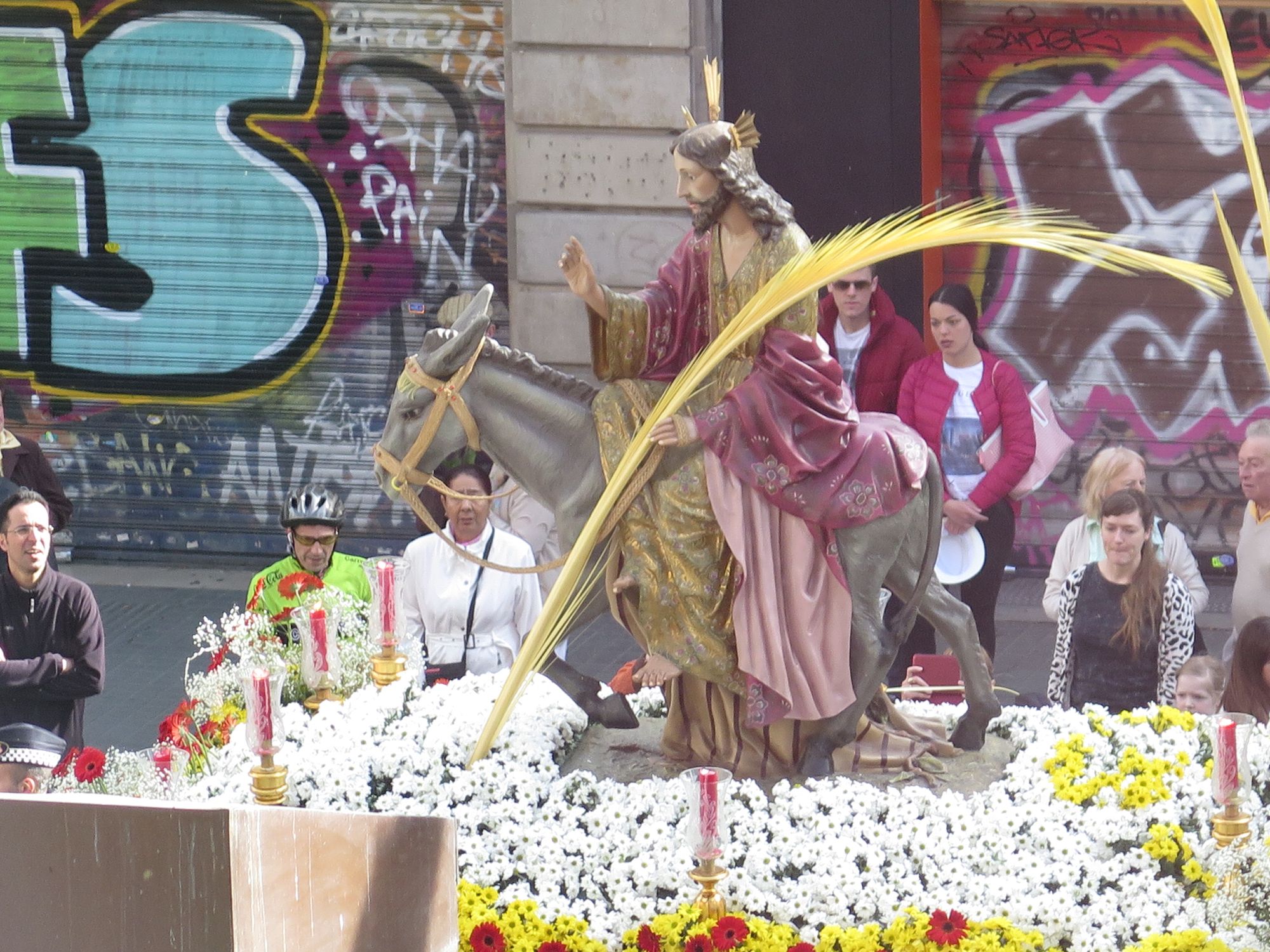
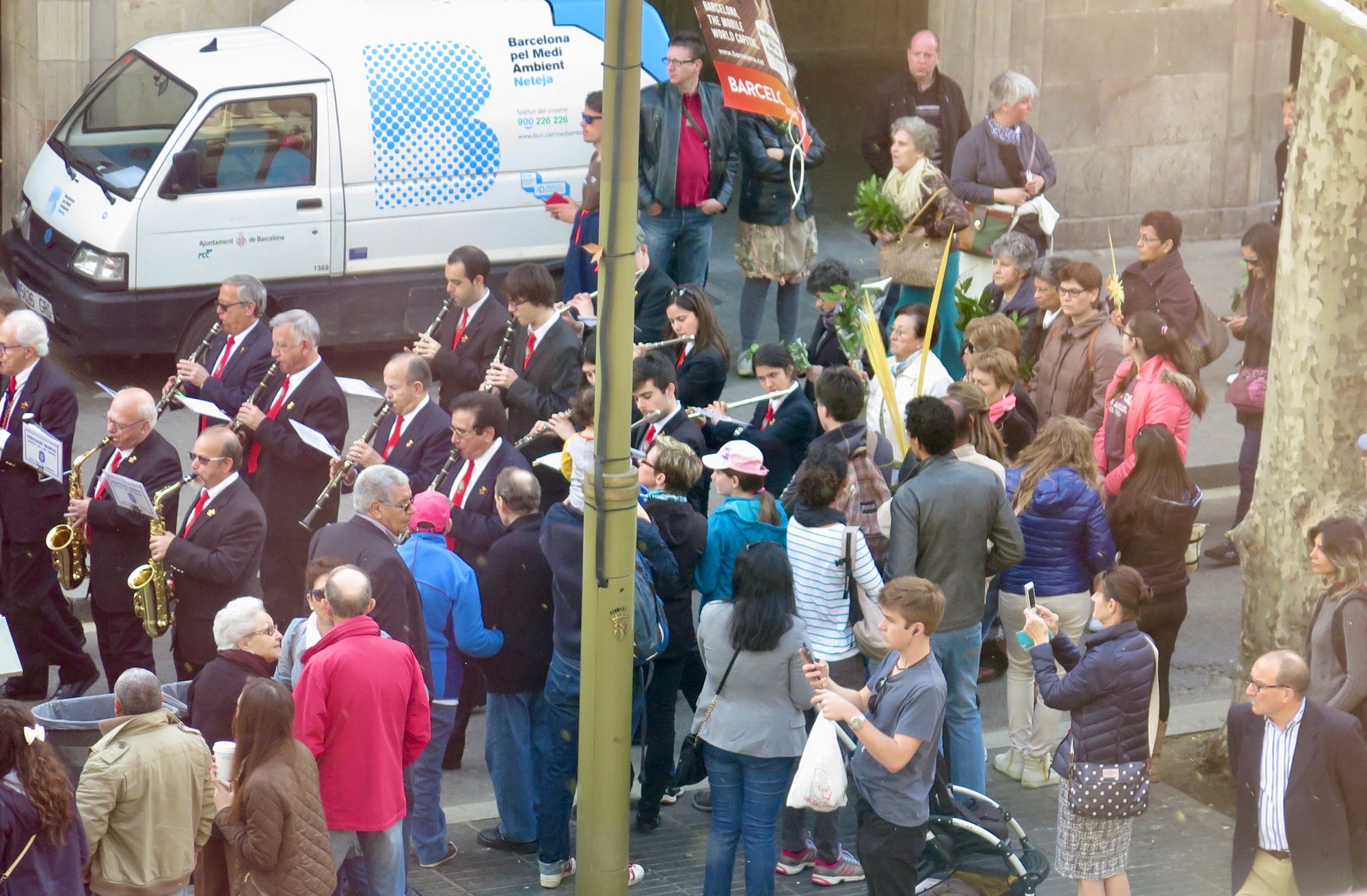
The Rambla is composed of various sections named for historical events or residents. La Rambla de Canaletes is the top section, just below Plaça de Catalunya, named for the little canals (canaletes) that brought water into the city from the upper reaches of the Llobregat river before the advent of underground pipes. The Canaletes fountain is just 50 yards down the Rambla, a gathering point for FC Barcelona fans after key victories and conquered titles. The water was once thought to be the best in Barcelona and, as the small bronze plaque attests, drinking from the magic fountain condemns you to a lifelong romance with the city, to which you will always return.
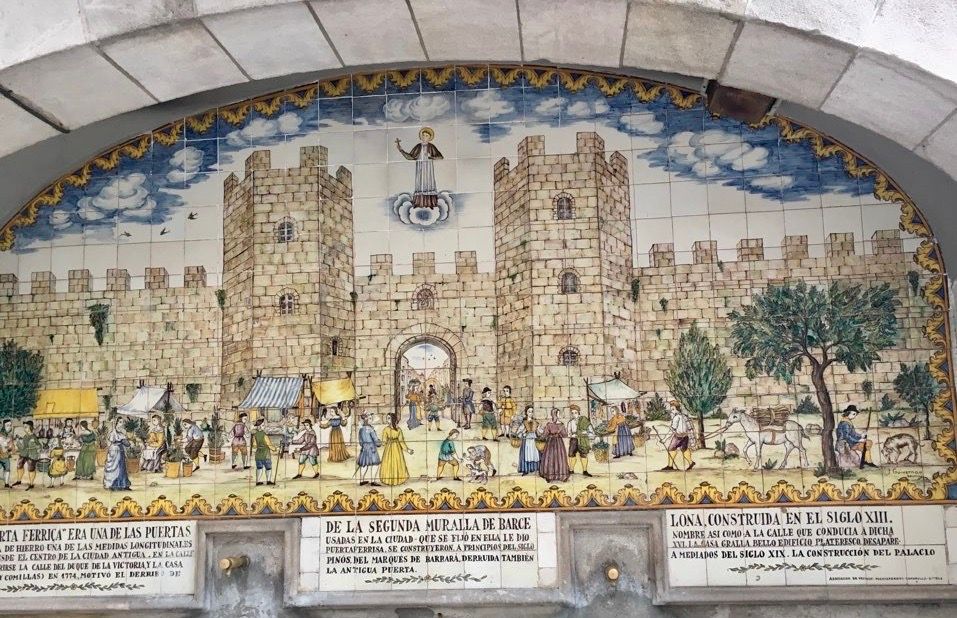
Just farther down the Rambla is the Rambla dels Estudis (Studies), so-called for the medieval University of Barcelona before Bourbon King Felipe V banished the rebellious students to Cervera, 100 km west of Barcelona, in the English Oxford-Cambridge tradition.
Just below the Rambla dels Estudis is the section known as the Rambla dels Ocells (Rambla of the Birds) until the city government closed down the sale of animals here for health reasons. Now the stands sell ice cream, soccer tickets and tourist trinkets instead of birds, rabbits, turtles and hamsters.
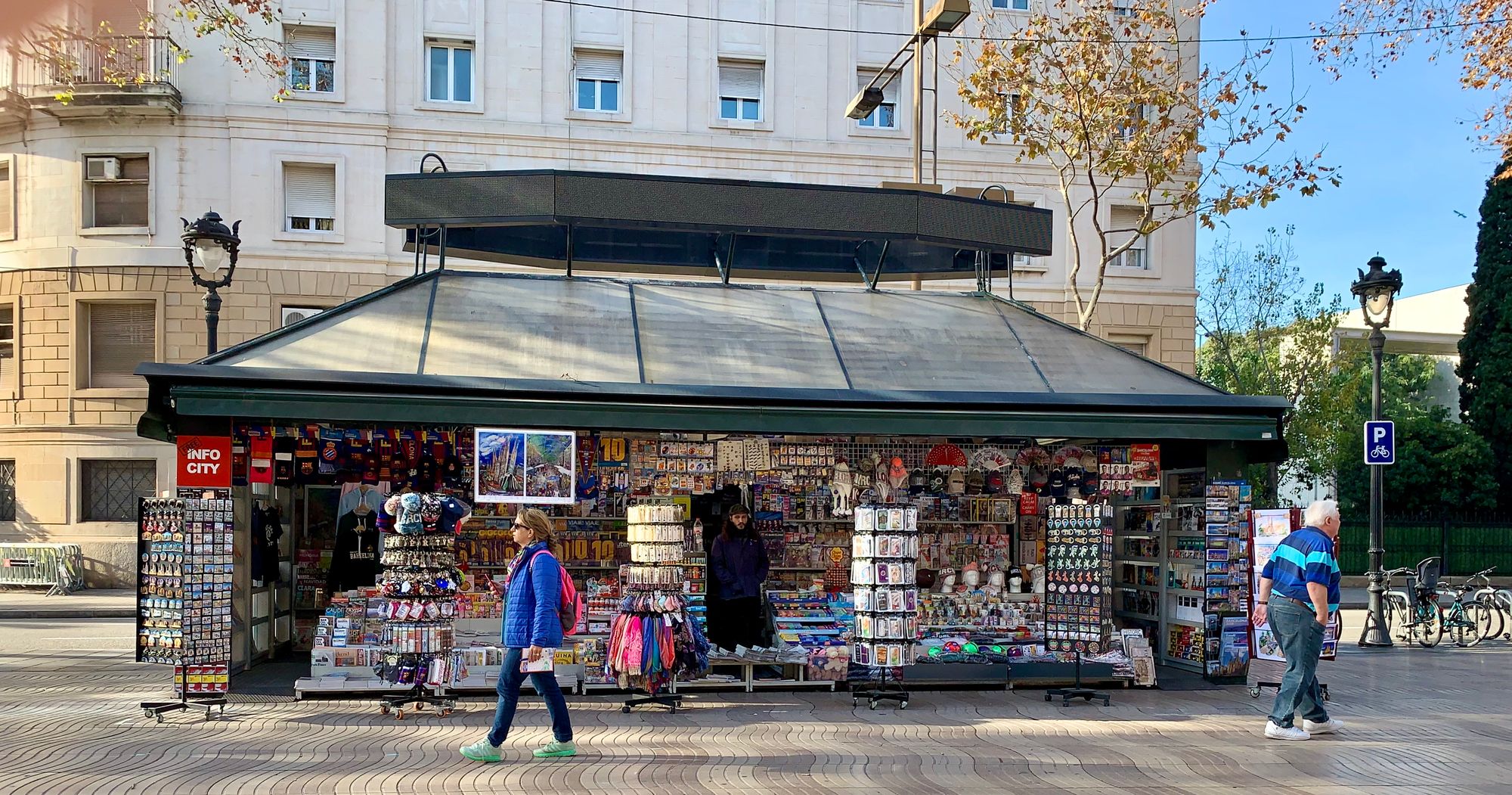
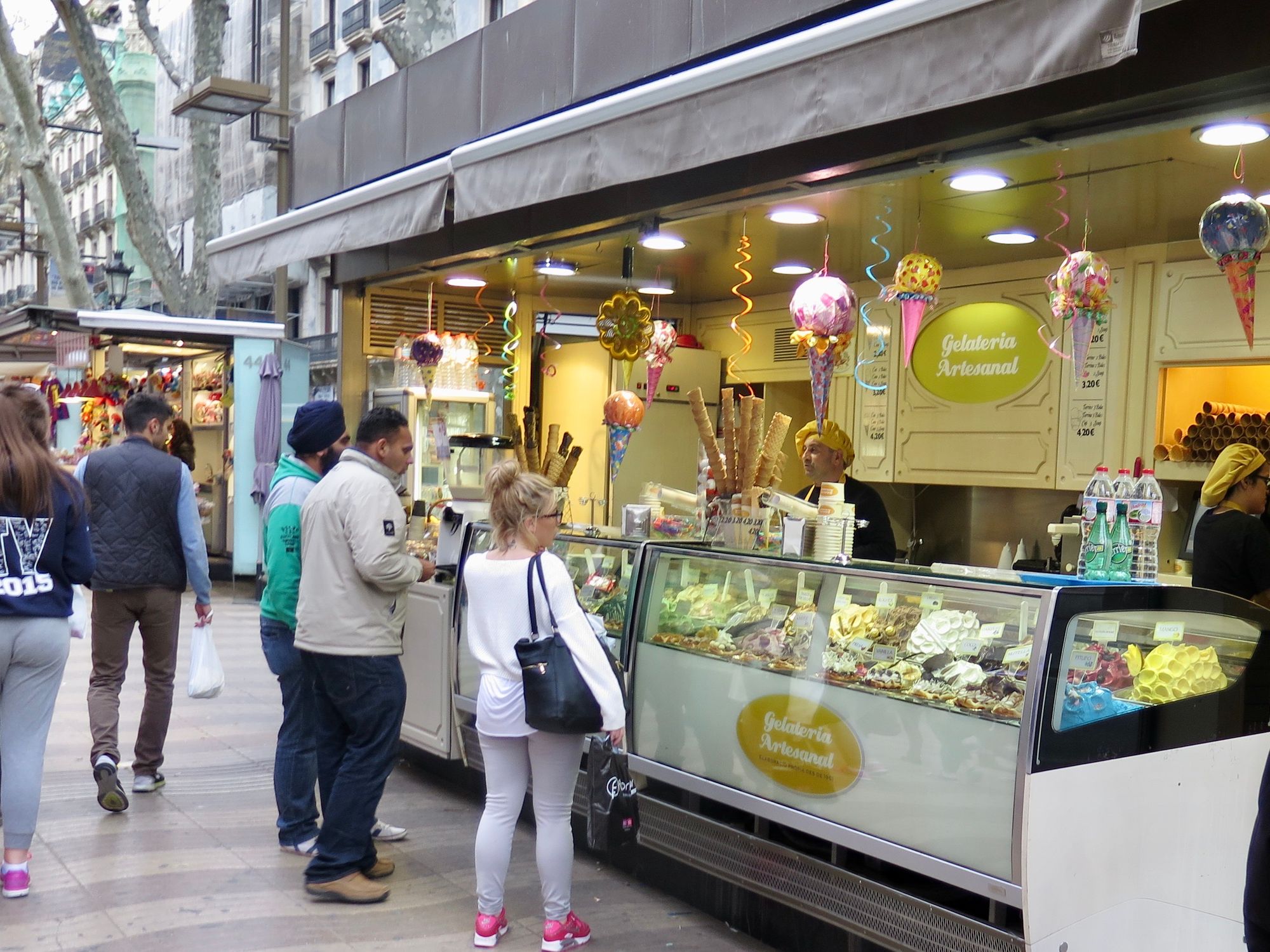
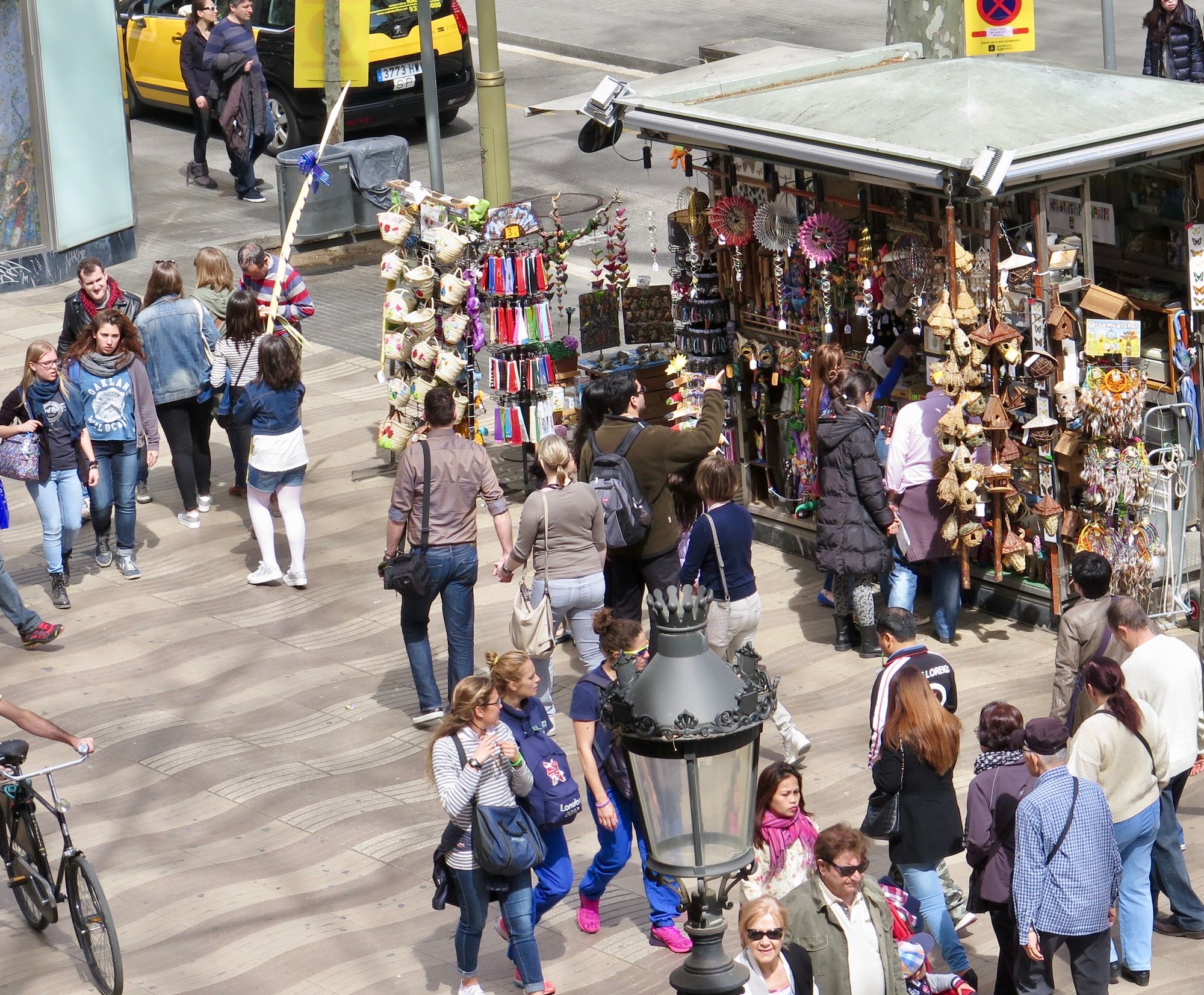
The following section is the Rambla de les Flors (of the flowers) starting at the entrance to Carrer de la Portaferrissa, so named for the iron bar used to standardize textile measurements that was once affixed to this portal into the walled city. The ceramic tile representation on the right side of this street shows the 13th-century Rambla, including the city walls that ran down the east side of the sandy water course, along with market stalls and a hunter with his dog and a duck. Palau Moja, an elegant 18th-century neoclassical palace, houses a very complete tourist office with maps and information on all aspects of Barcelona and Catalunya.
The Rambla de les Flors has always been a sweet spot, more fragrant, quieter, slightly narrower squeezed in between the flower stands. It is said that the flower vendors of the 19th and early 20th centuries were of extraordinary beauty and that famous Barcelona artists from Picasso to Nonell to Casas to Miró found models, lovers and wives along this romantic interlude on the La Rambla.
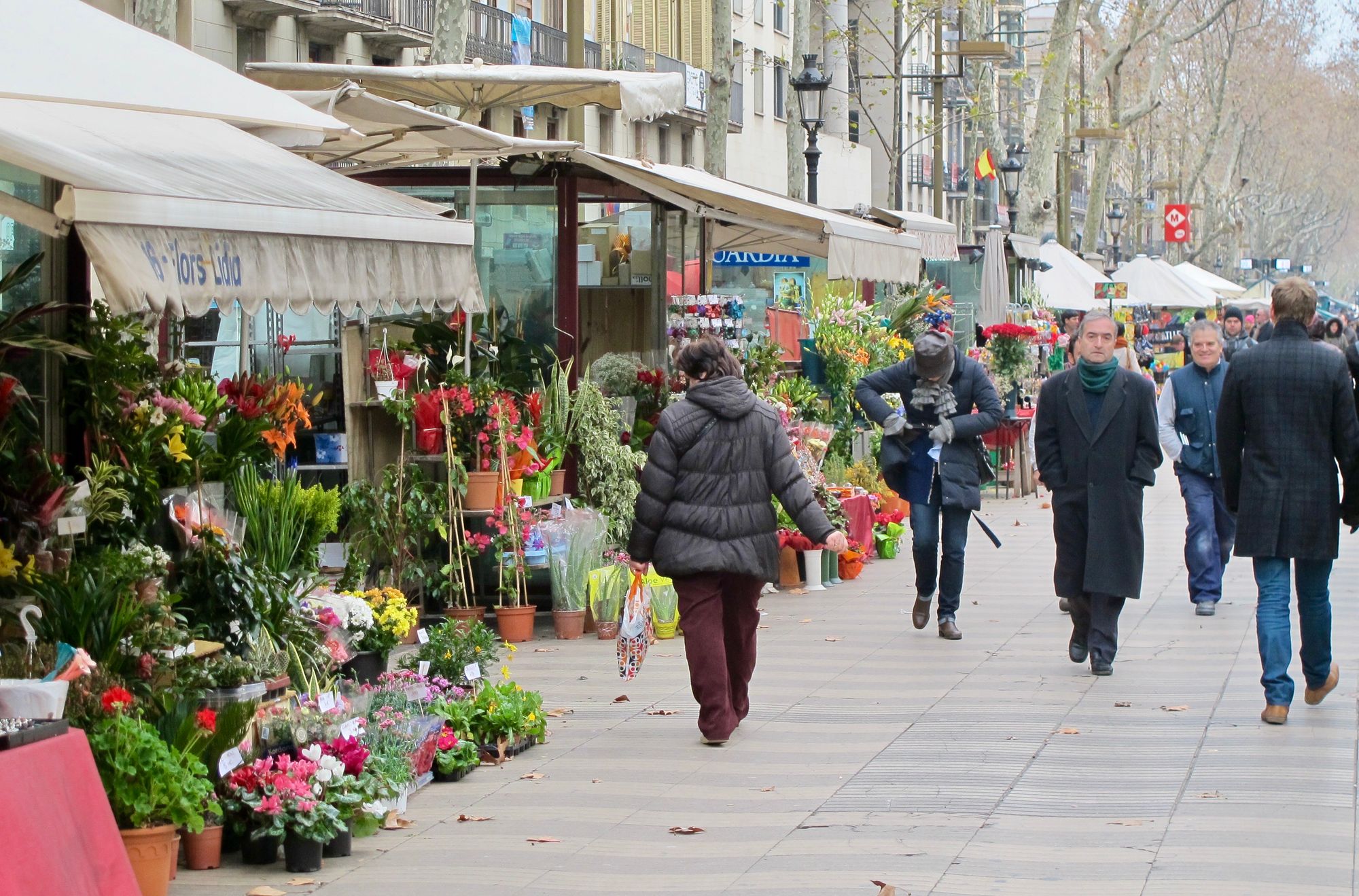
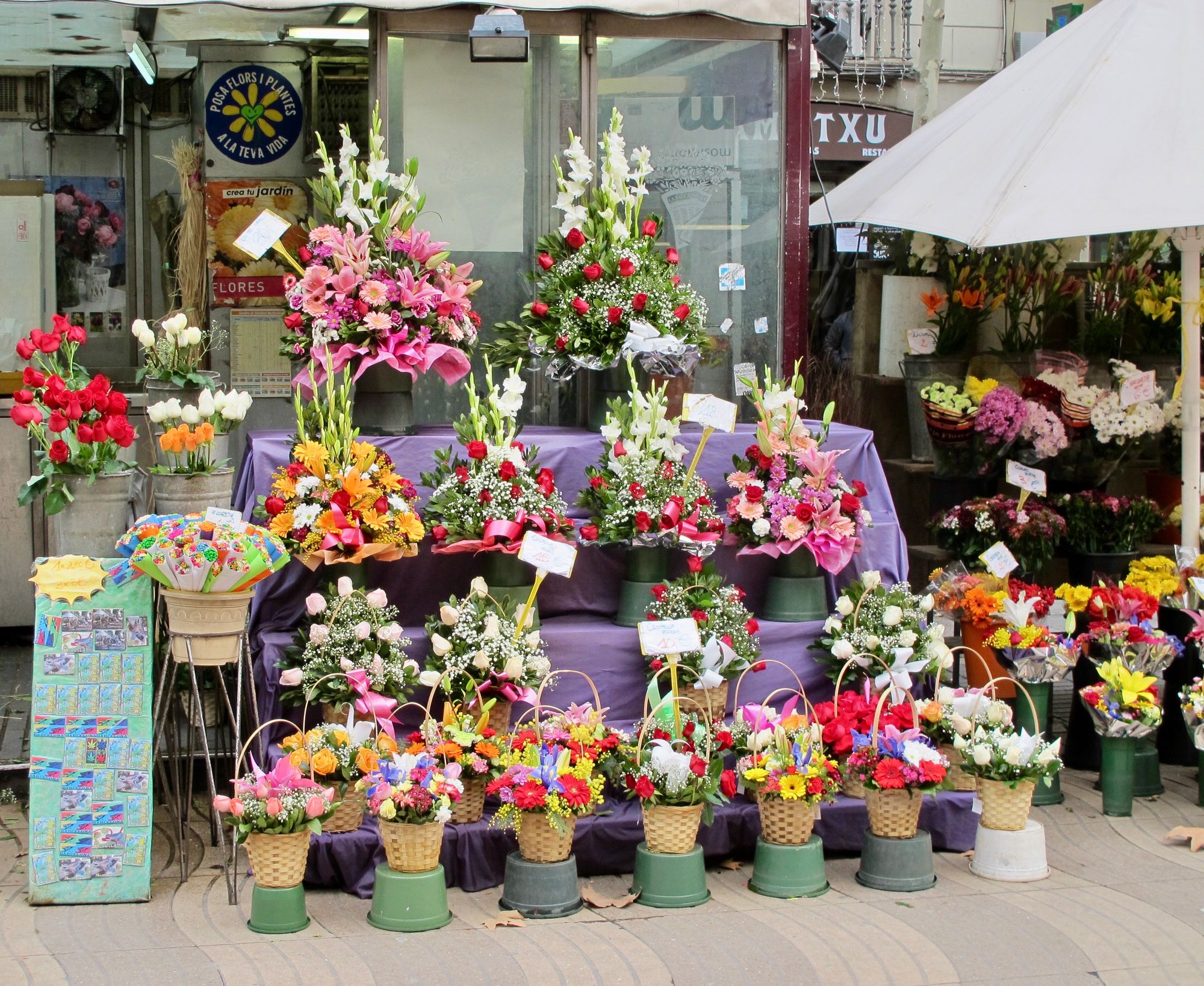
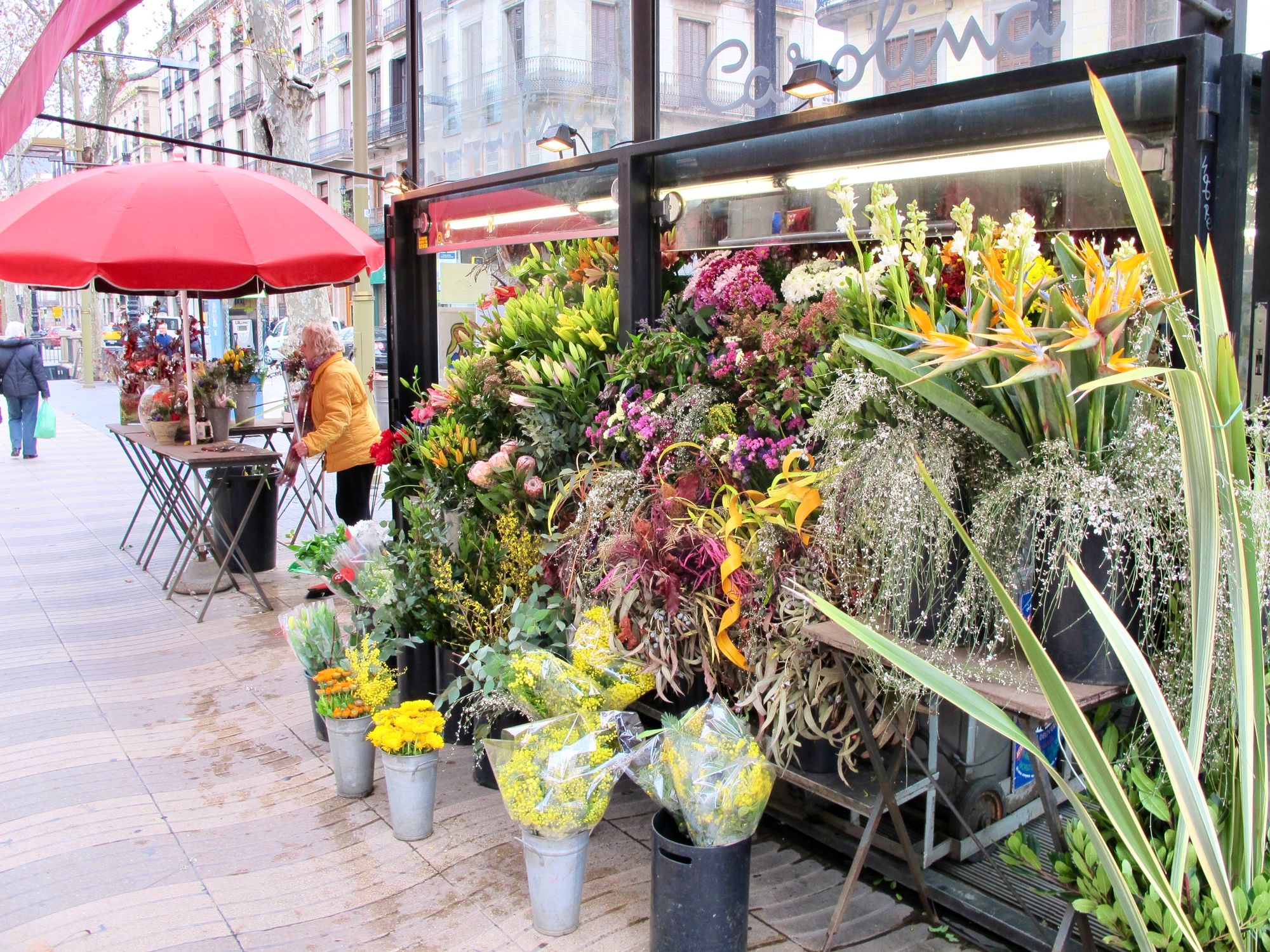
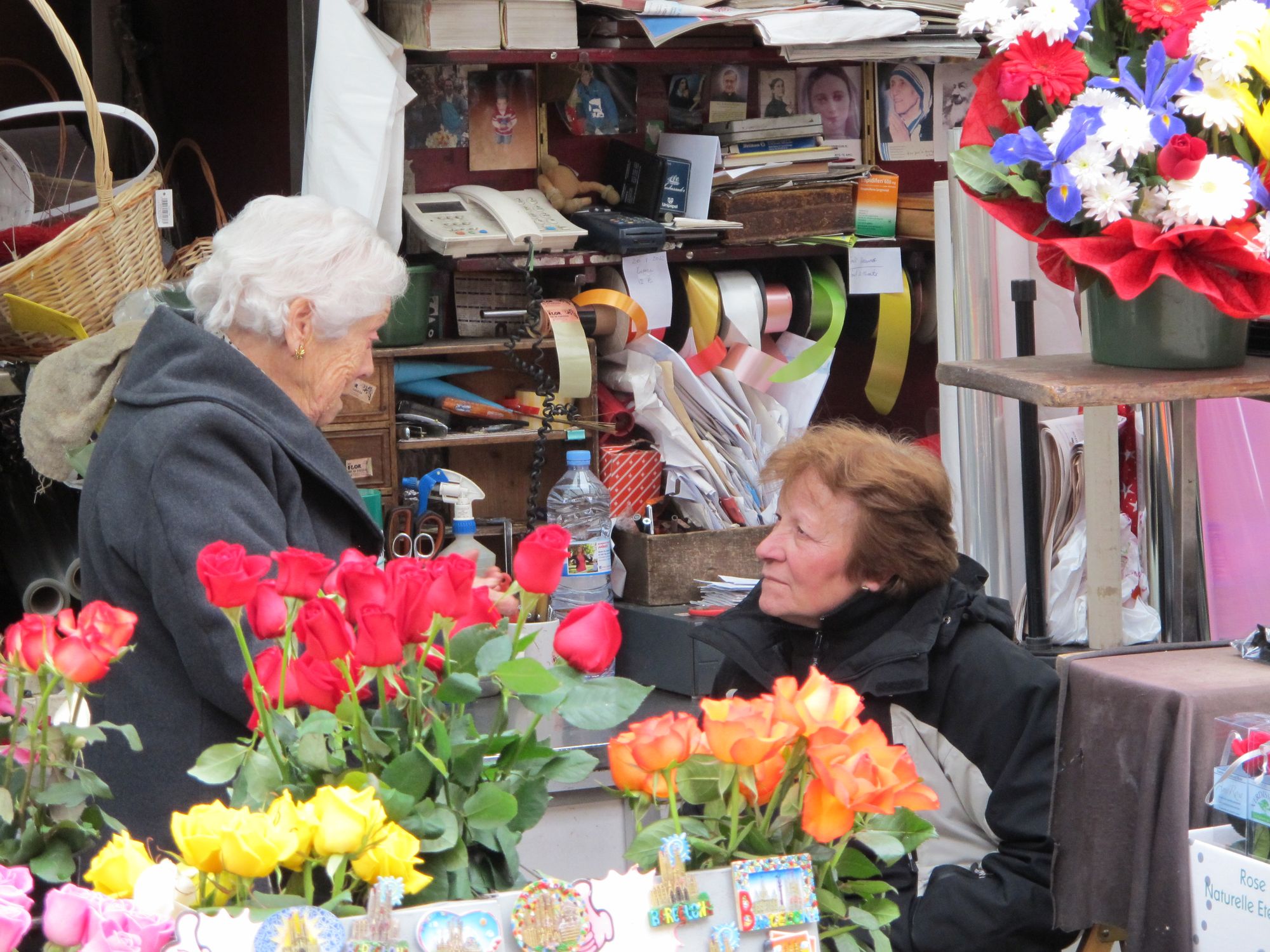
Along Rambla de les Flors lies the Boqueria market —the great Art Nouveau entryway announcing the Mercat de Sant Josep, named for the convent that occupied this space before it was torn down in the mid-18th century. A tour of the Boqueria is always a good idea; sticking to the periphery, since the heart of the market is often impossibly crowded, will reveal architectural treasures such as the ionic columns, the greengrocers’ market in Plaça Sant Galdric, or Llorenç Petras and his wild mushroom emporium at the back edge.
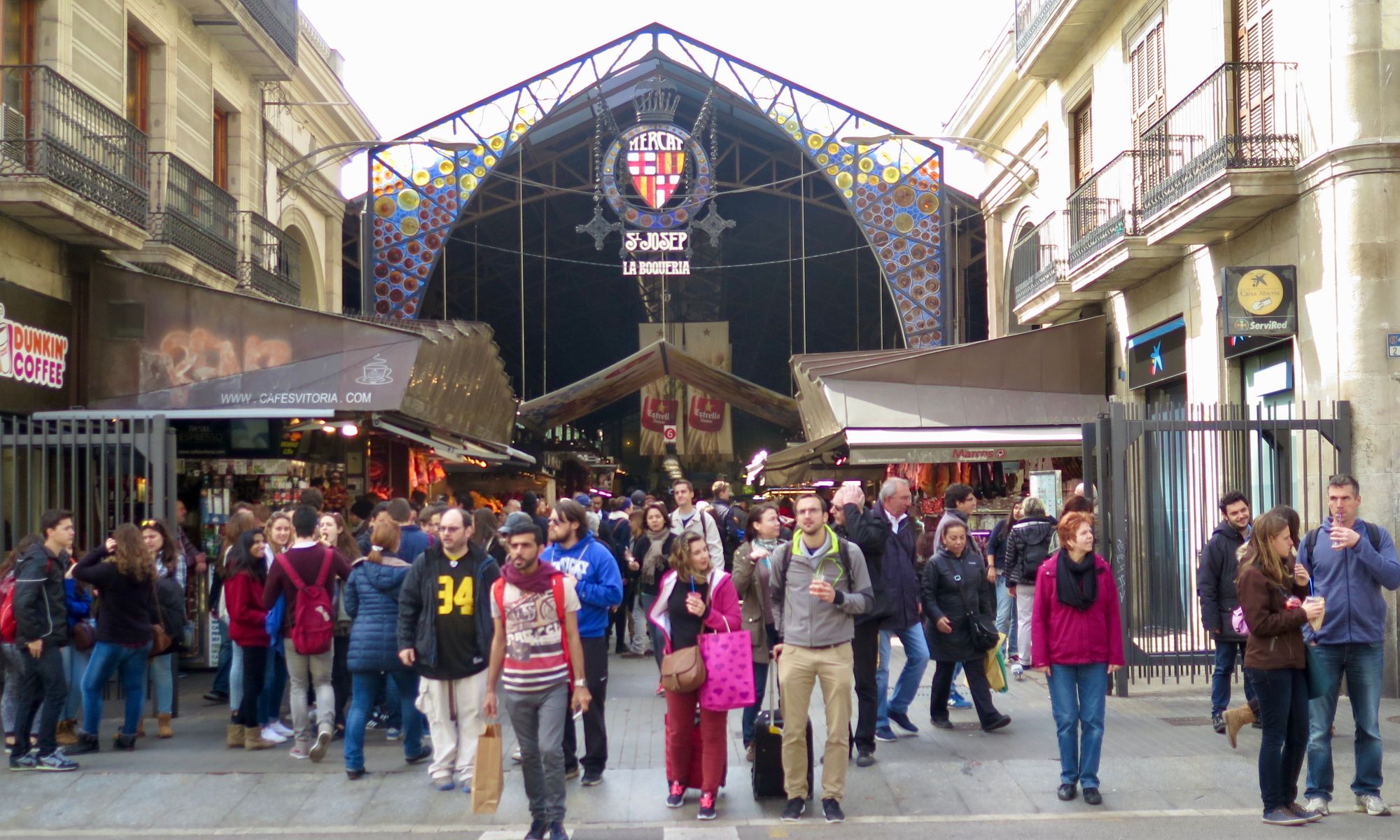
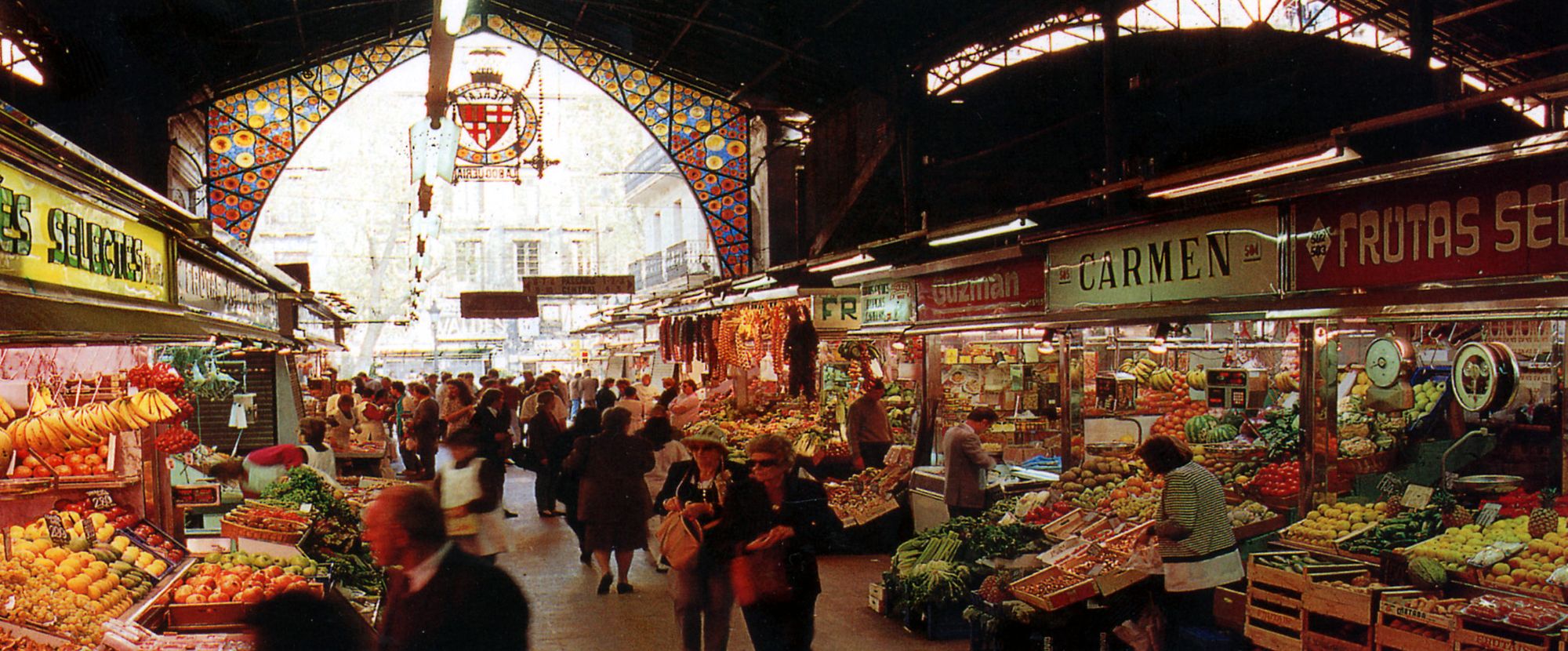
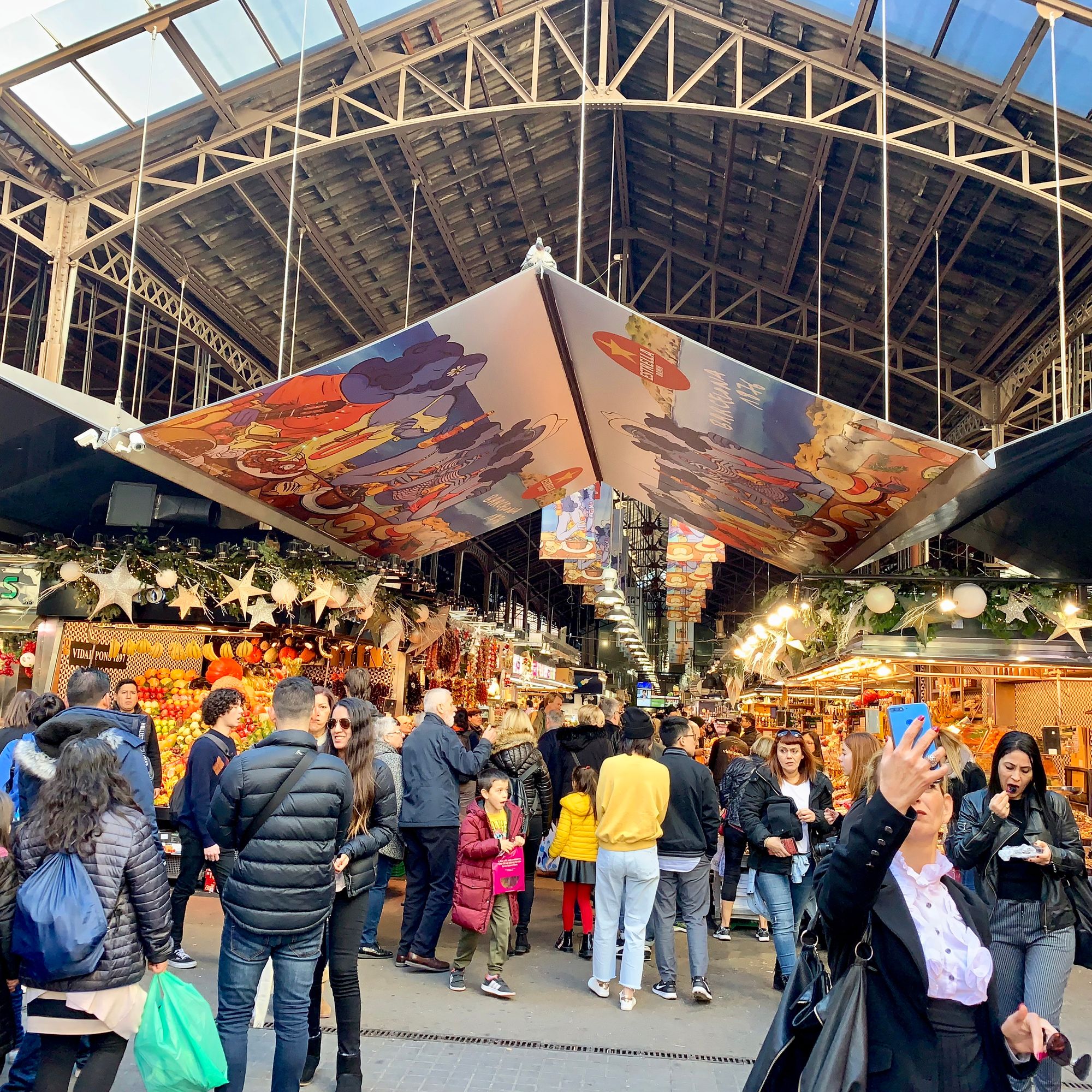
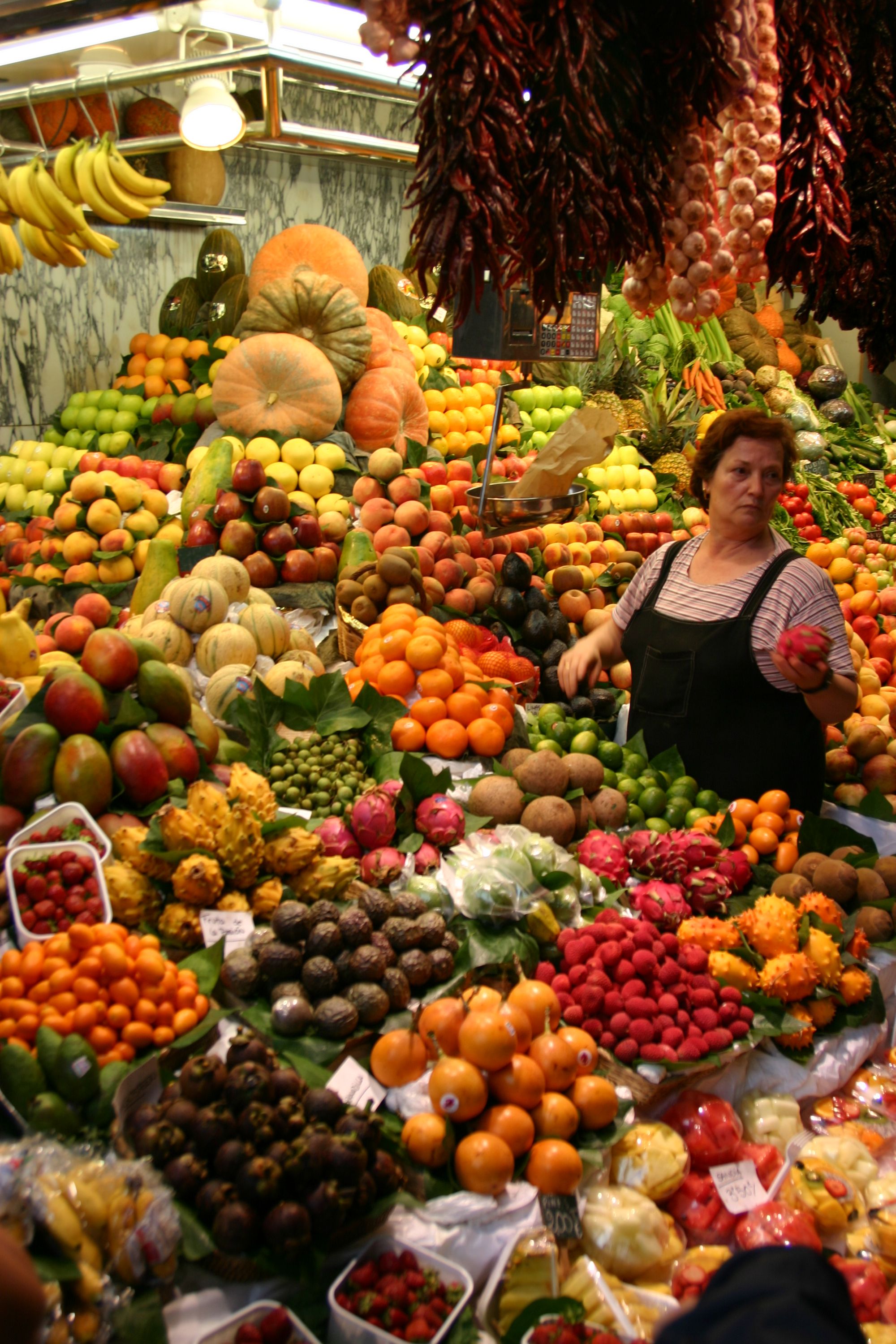
The beloved Mercado de la Boqueria fronts the Rambla
Next down the Rambla is the Pla de la Boqueria, where the Joan Miró mosaic with his characteristic bright red and blue colors offer strollers the opportunity to walk right through a work of art. Miró (1893-1983), was born not far away in Passatge del Crèdit and was Barcelona’s greatest home-born-and-bred 20th century artist.
Farther on the right is the Gran Teatre del Liceu, the Barcelona opera house, an opulent oasis of music and culture, always an interesting visit. Especially the Cercle del Liceu, Spain’s oldest private club, with its trove of Ramón Casas paintings, which was miraculously saved from the 1994 blaze that burned most of the opera house to the ground.
Across from the opera house is the Café de l’Opera, a far cry from the one in Paris, but a sweet little slot for a beer with a back door out into the alley, a handy escape route for felons, fugitives and philanderers.
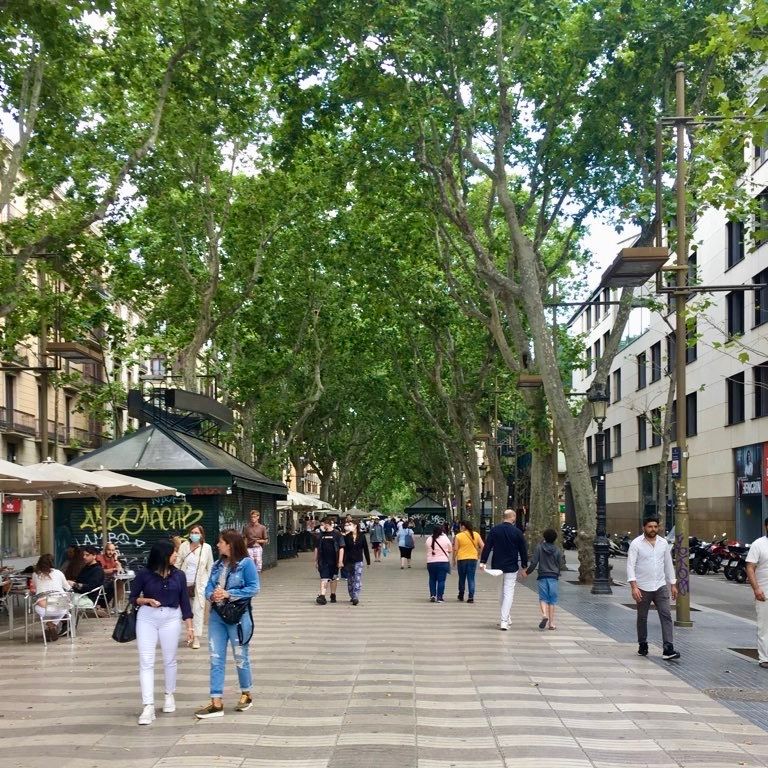
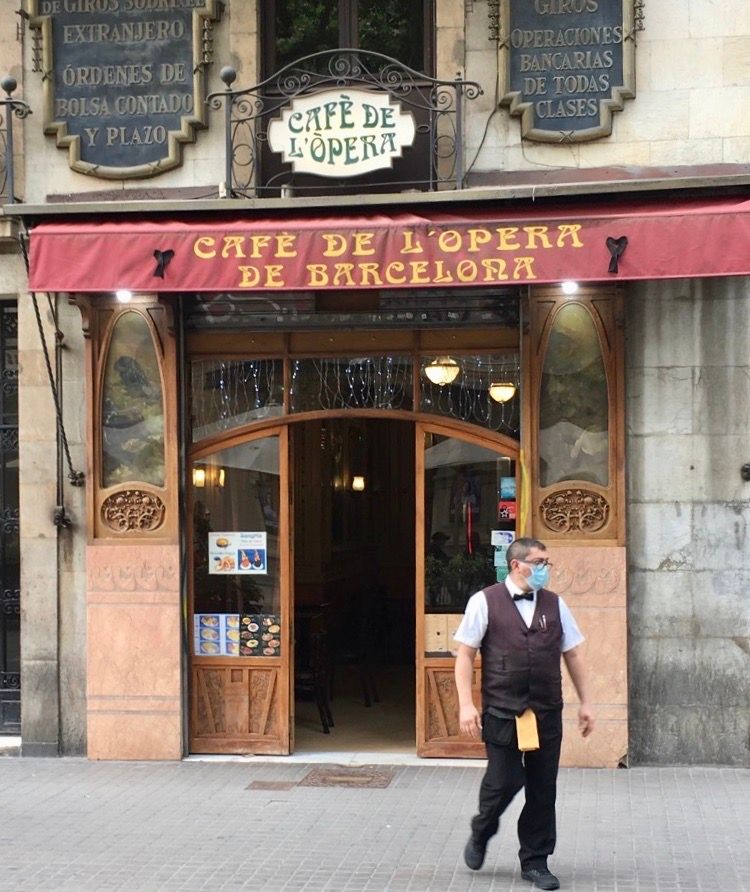
The terraces and restaurants on the Rambla are uniformly awful, specializing in pre-fab paella and poisonous sangría, the beverage of choice for clueless tourists, usually concocted of the cheapest grain alcohols and damaged and unsellable fruits from the Boqueria.
The Hotel Oriente at No. 45 Rambla dels Caputxins, named for the hooded Capuchin monks whose convent stood here until 1835, was once one of the city’s most famous and elegant hostelries and hosted celebrities from Hans Christian Anderson in 1862 to Ernest Hemingway in 1936. The life-sized angels on either side of the entryway, one blowing a trumpet and the other brandishing a laurel wreath, are the the highlights of the antique façade.
Plaça Reial, off to the north side of the Rambla is a neoclassical square, with towering date palms and lampposts, designed by a 26-year-old Antoni Gaudí fresh out of architecture school in 1878. Note the helmets and the serpents if you’re looking for telltale signs of the true Gaudí. The Three Graces, Aglaia (Beauty), Euphrosyne (Happiness) and Thalia (Charm) preside in the central fountain.
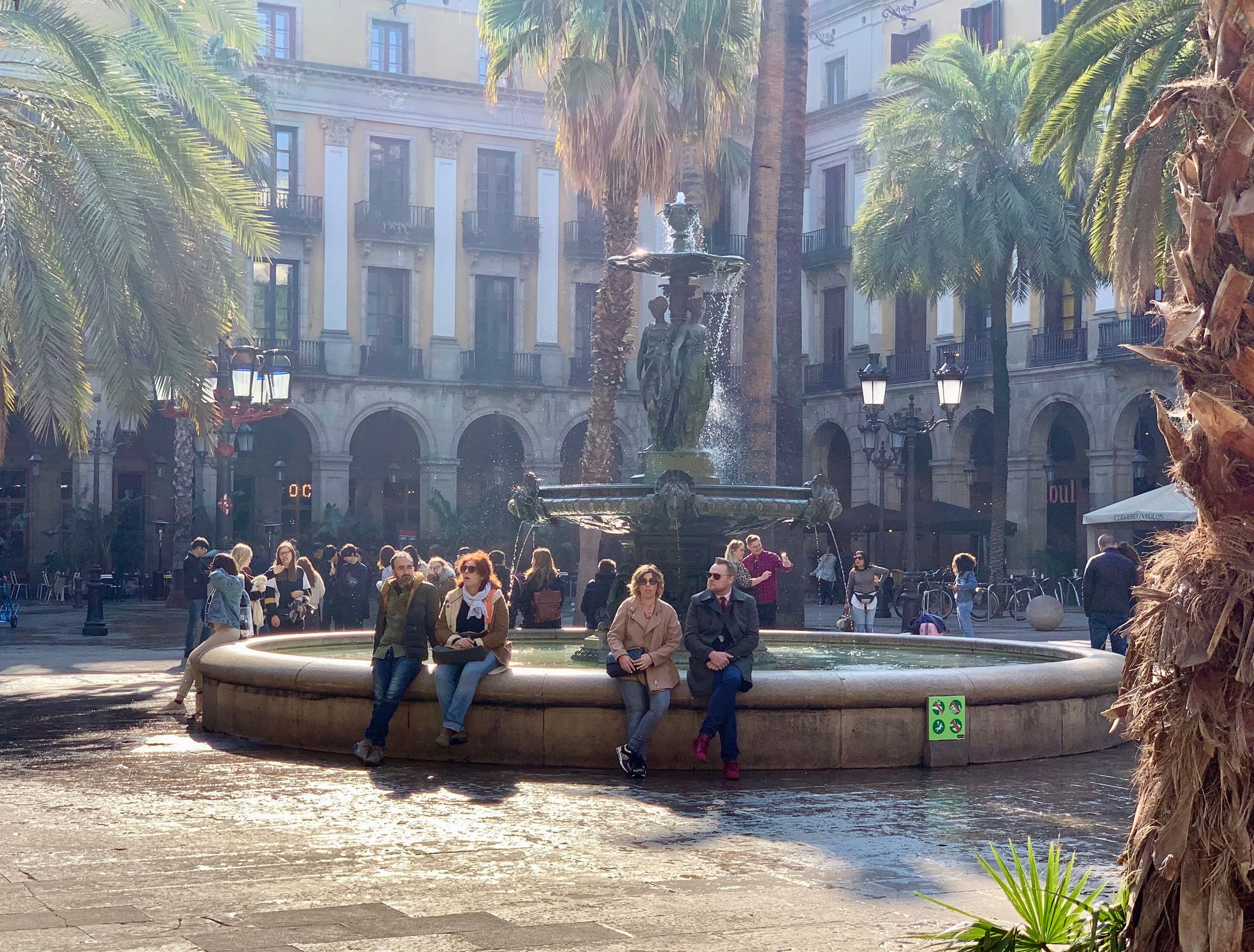
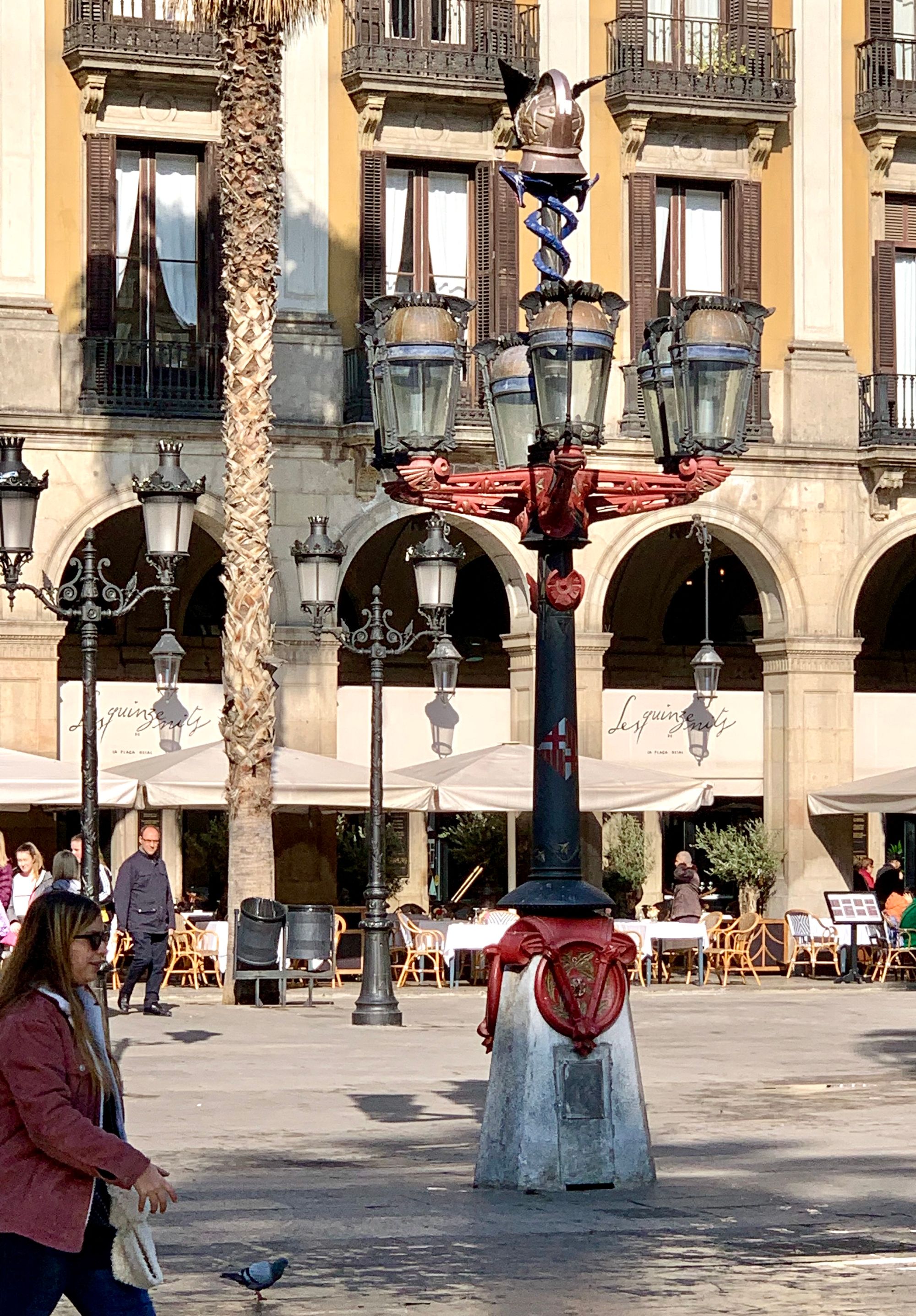
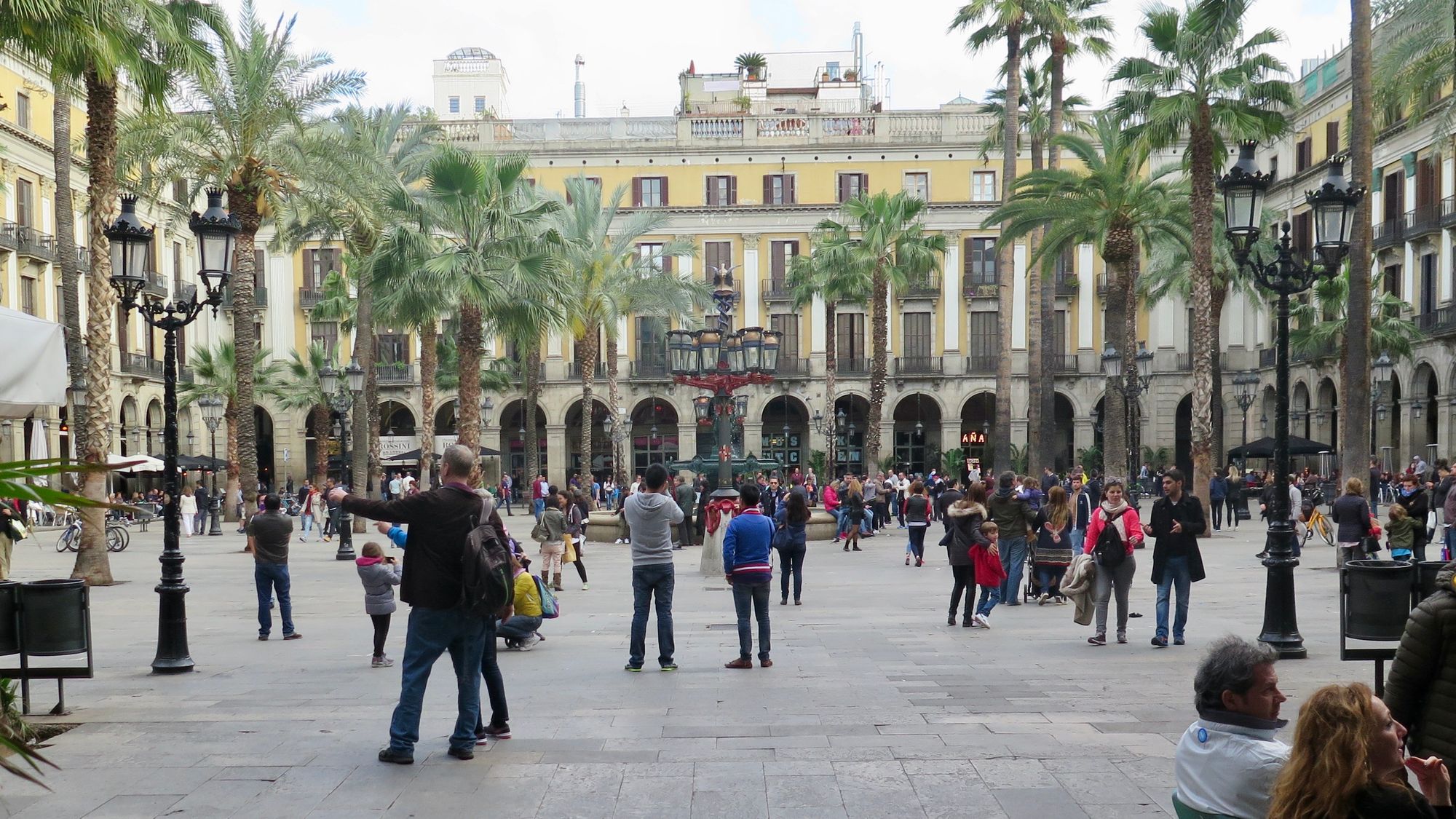
Farther down the Rambla is the Plaça del Teatre facing the Teatre Principal, now derelict but once, as its title would suggest, Barcelona’s main theatrical venue. The statue occupying the square is the father of modern Catalan theater, Frederich Soler “Pitarra” (1839-95) seated grandly facing the façade of his beloved theater. Around the corner to the left of the theater, conceals one of the Rambla’s prime secret bars, “La Cazalla”, literally a tiny hole in the wall named for its eponymous specialty, an anis seed liqueur from Cazalla de la Sierra in the mountains of Andalusia. This section of the Rambla is thick with portraitists who do caricatures of famous personalities up to and including yourself.
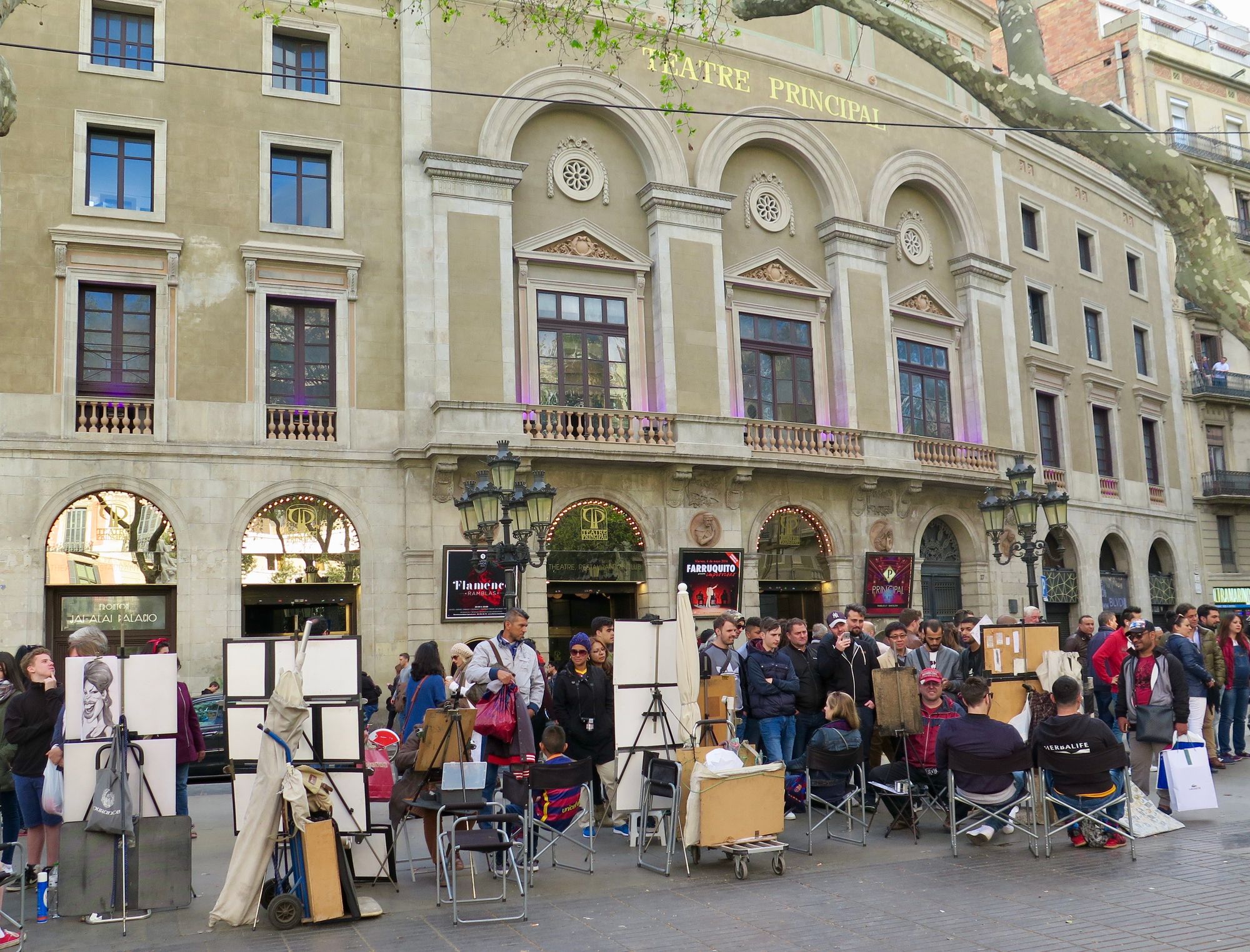
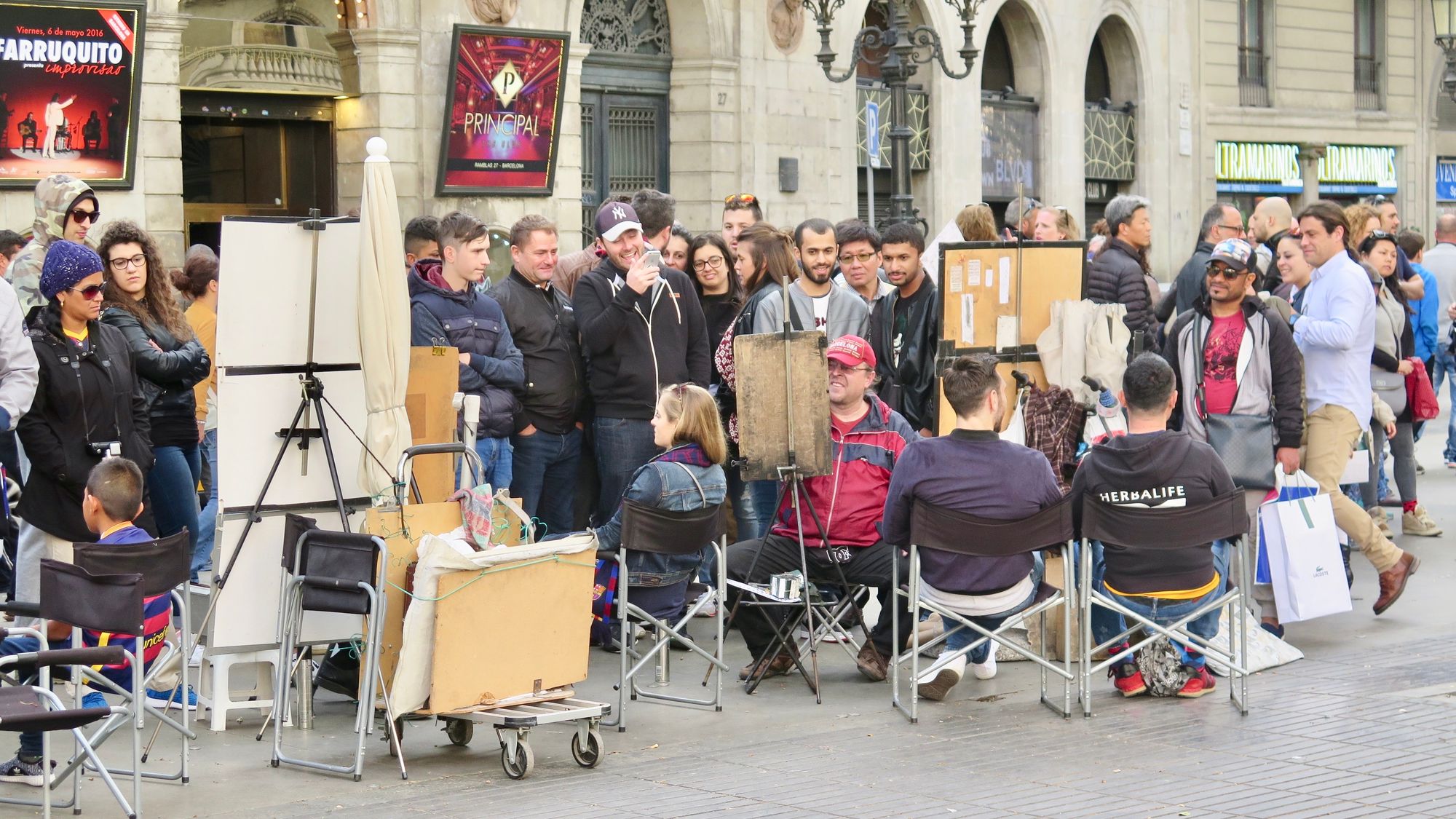
La Rambla de Santa Mònica, named for the Santa Mònica convent that once stood here, was famous for streetwalkers and carnal commerce of all kinds until the early part of this century when gentrification and tourism finally did away with La Rambla’s most colorful corner. The Centre d’Art de Santa Mònica art gallery overlooks sidewalk cafés as La Rambla reaches the medieval shipyards, Les Reials Drassanes de Barcelona, where Catalunya’s fleet was constructed in the 13th and 14th centuries.
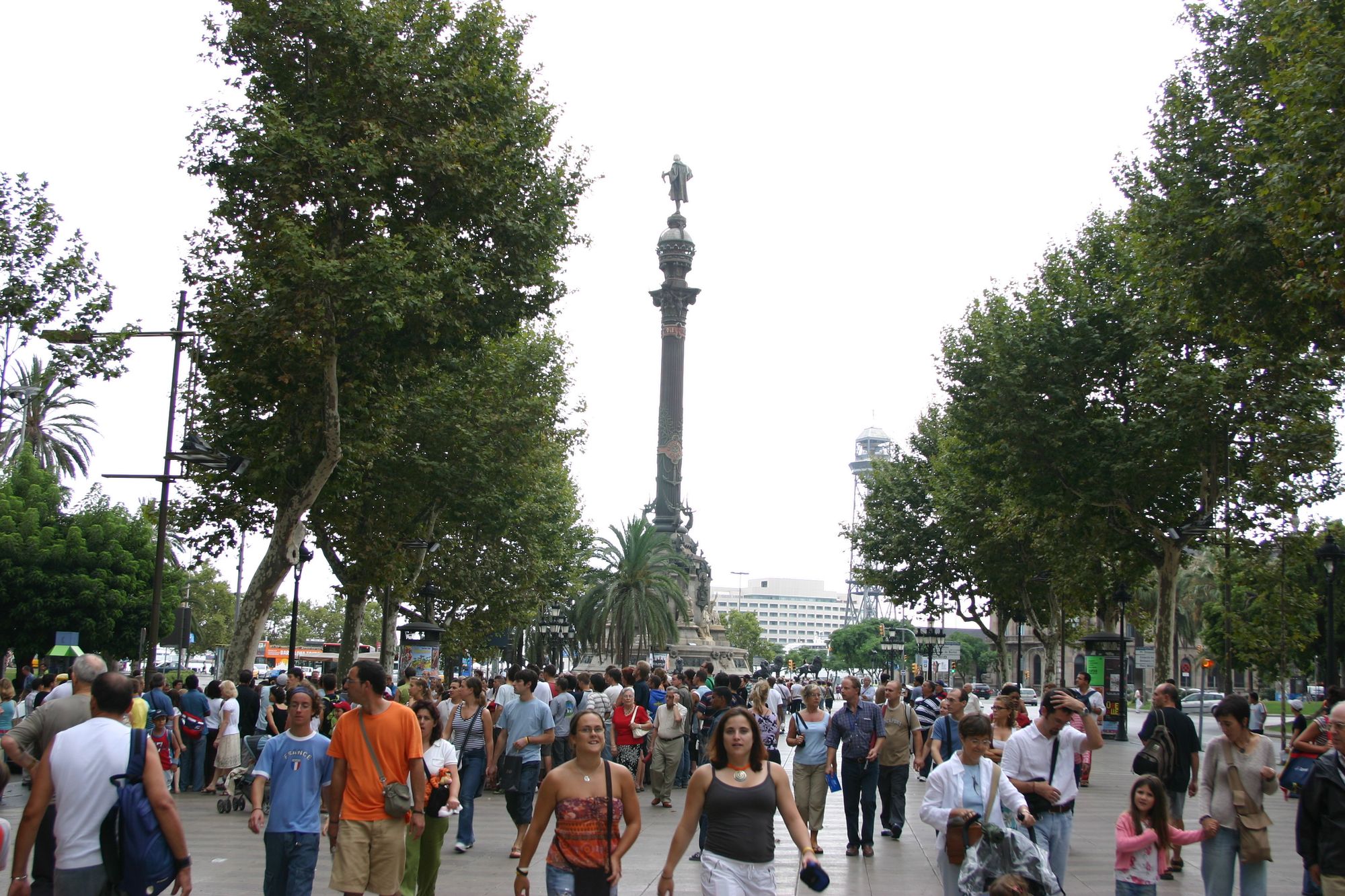
At the foot of the Rambla near the sea, the Christopher Columbus monument offers views back up the pedestrian passageway the from the top of the tower, as well as a closeup look at Columbus's 18-inch digit pointing straight out to…Sicily, one more of the many contradictions, conundrums, oxymorons and flat-out lies surrounding Barcelona’s attempt to appropriate Columbus as part of the city’s brand. Columbus was neither born nor did he die in Barcelona, nor did he set out from or return to Barcelona after “discovering” America. Barcelona and Catalunya were, in fact, legally excluded from all trade with the New World until the 19th century, as Spain (dominated by the Madrid-based Kingdom of Castilla) claimed all westward commerce for itself and left the Catalans to ply the Mediterranean as they had been doing for hundreds of years: yet another sore point in the Catalan-Castilla, Barcelona-Madrid medley of misunderstandings.
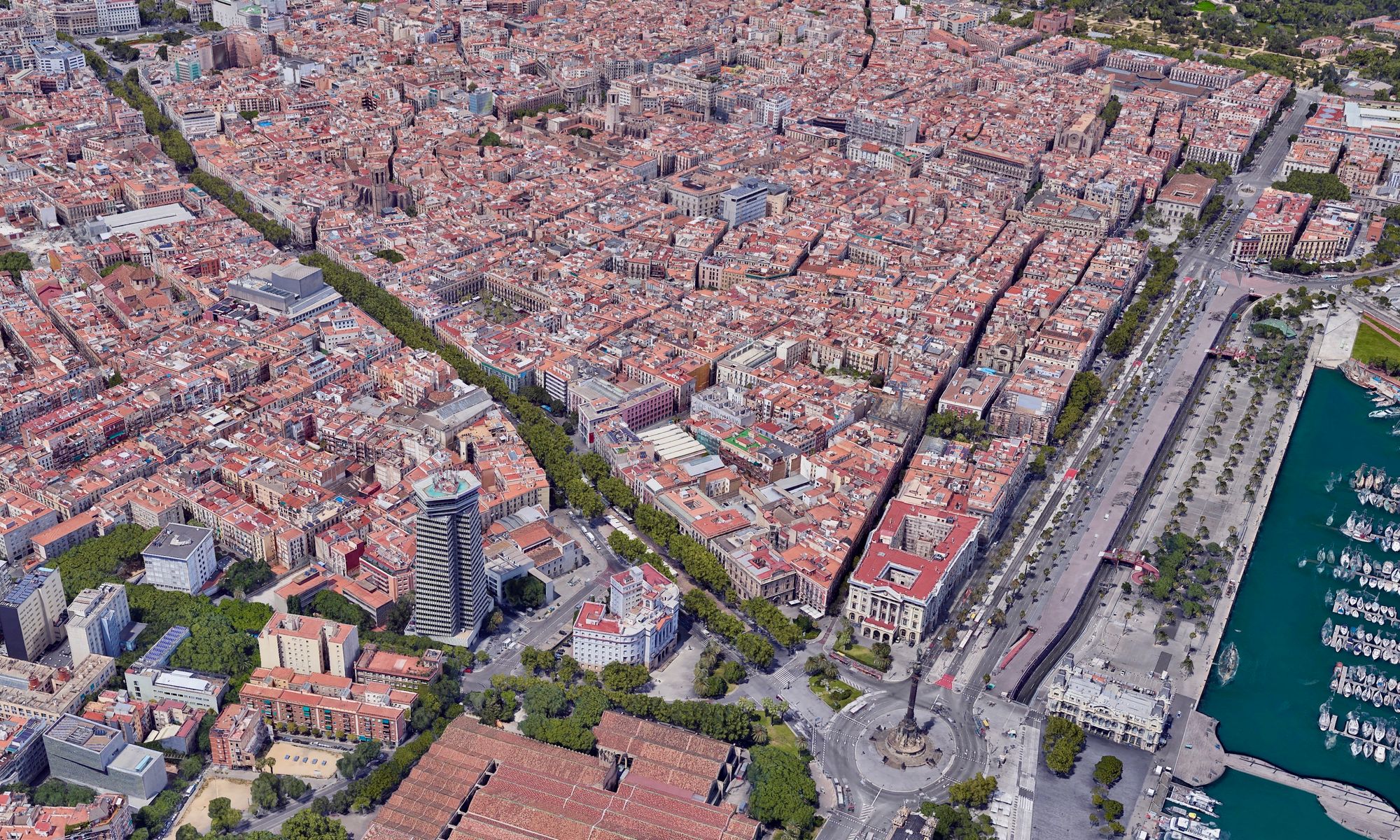
Across the square (actually more of a roundabout) dock the Golondrina tourist boats for a soothing cruise across the port and even up the coast to Badalona for a peaceful look at Barcelona from the sea after this plunge through the city’s thickest concentration of humanity.
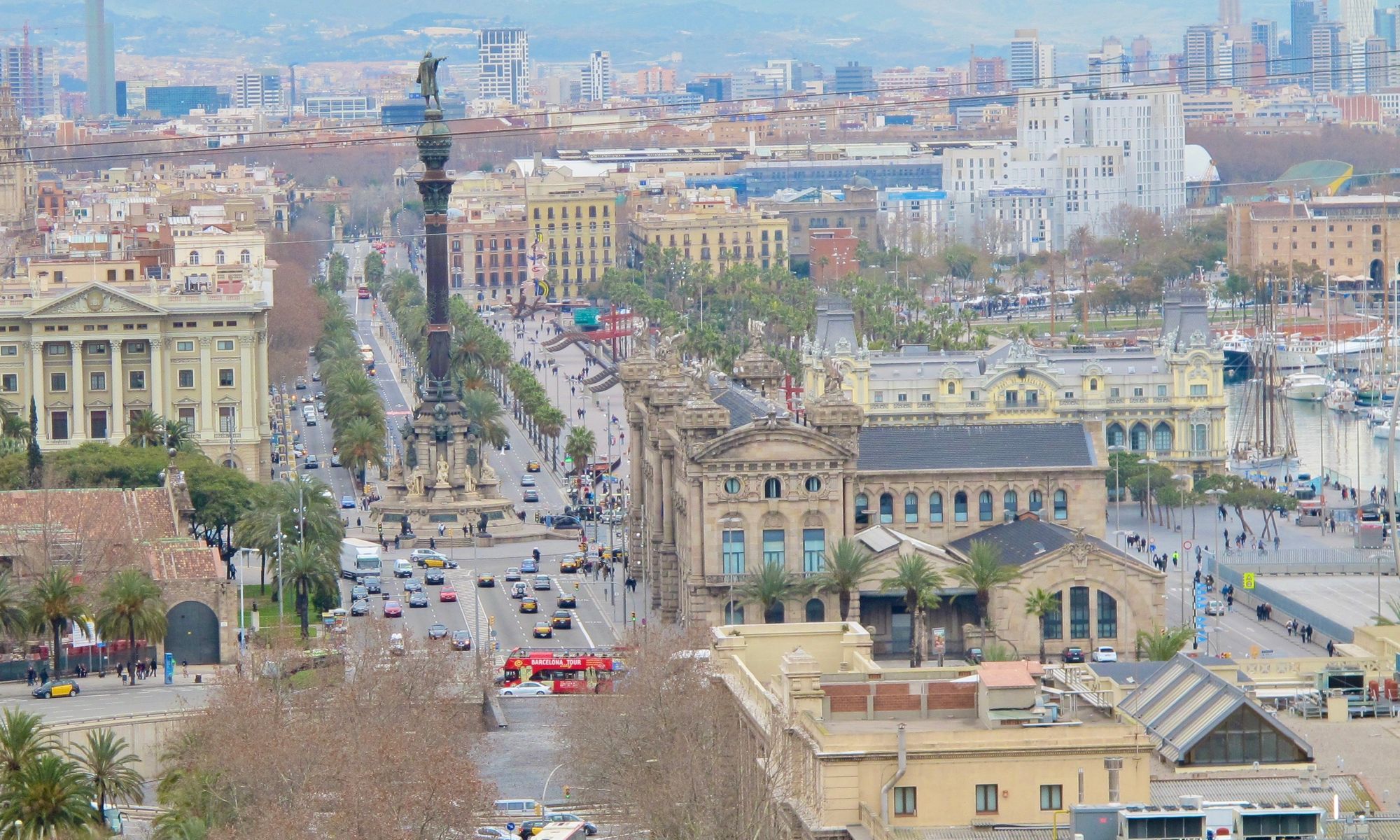
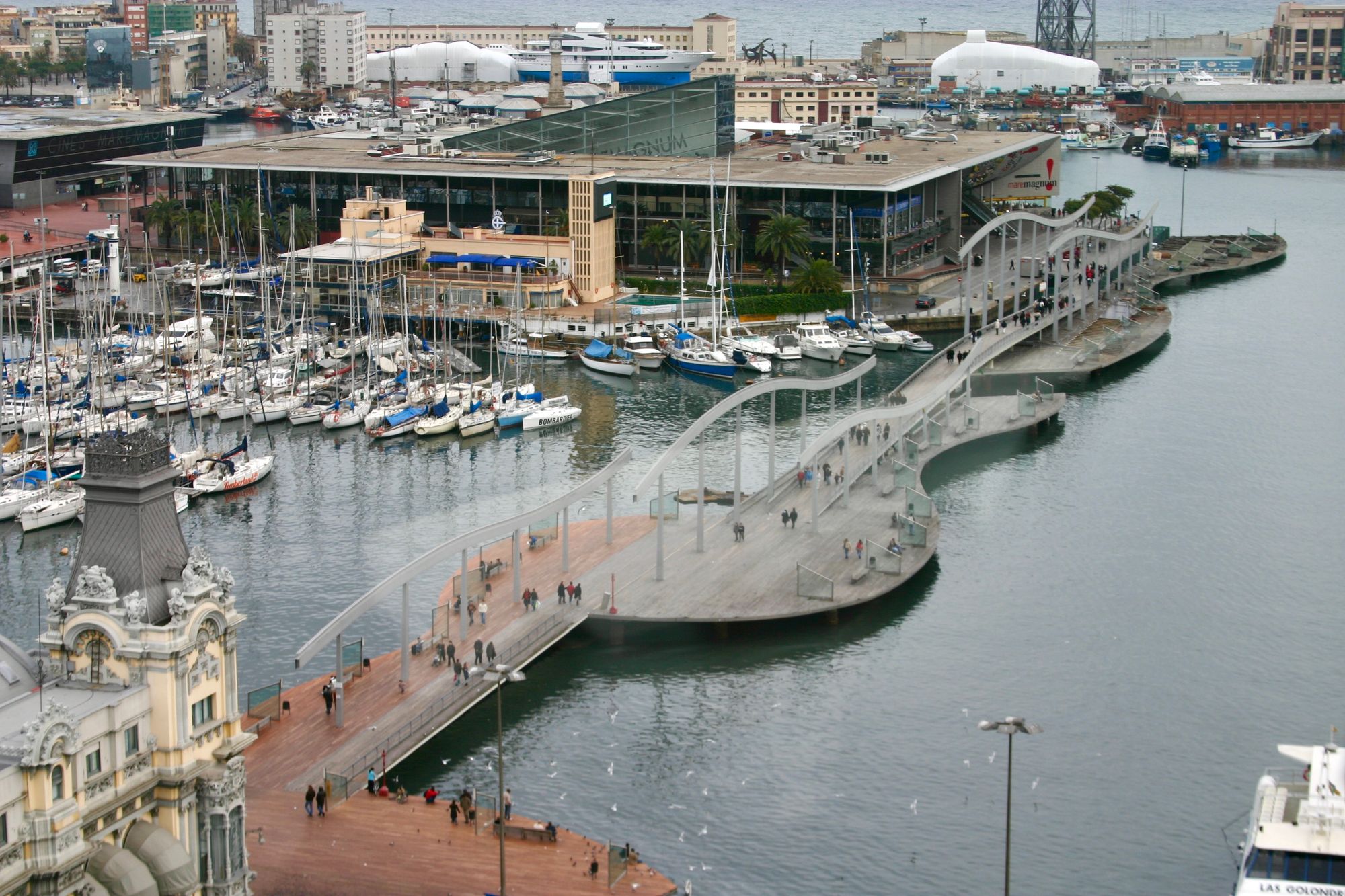
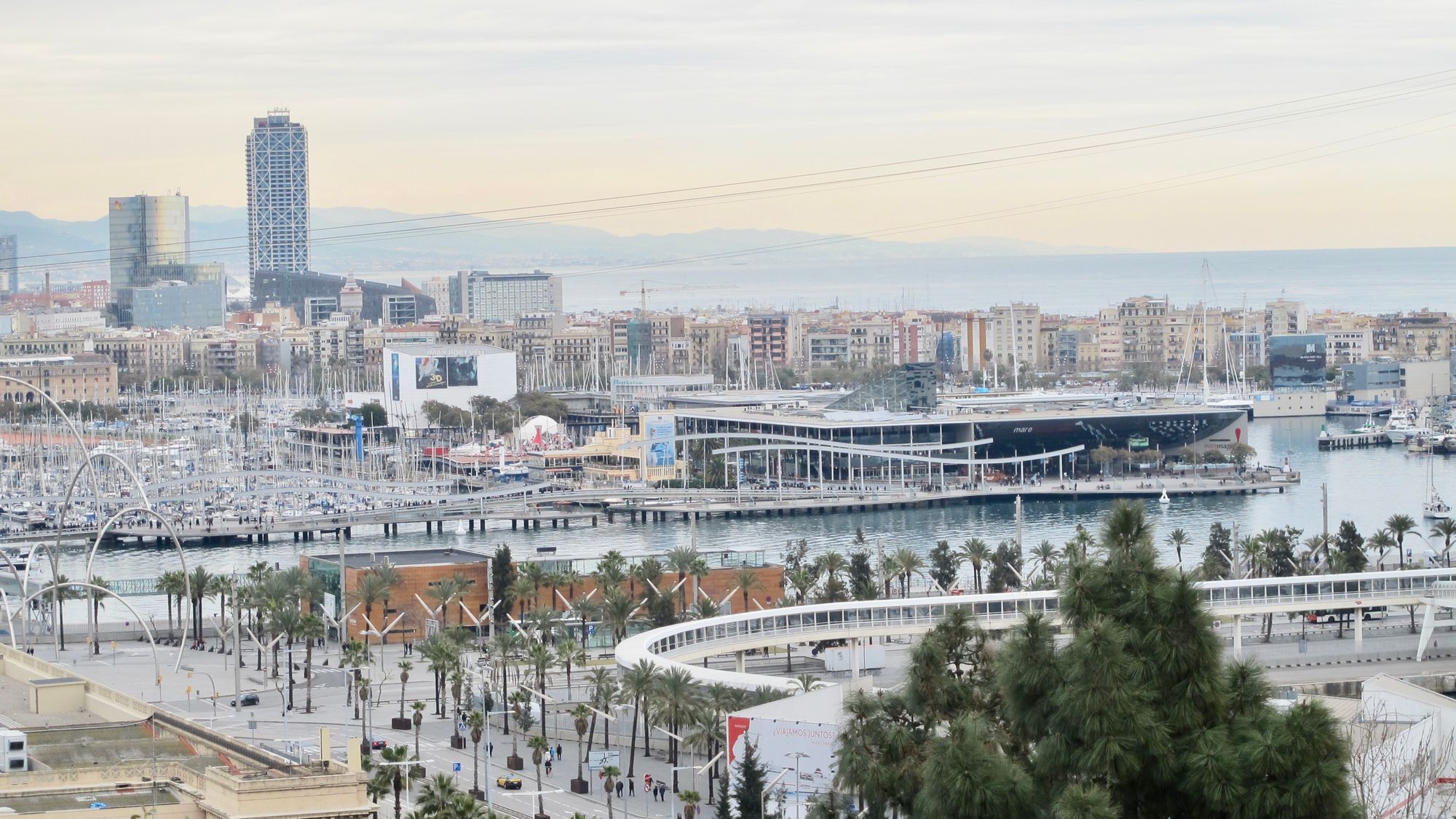
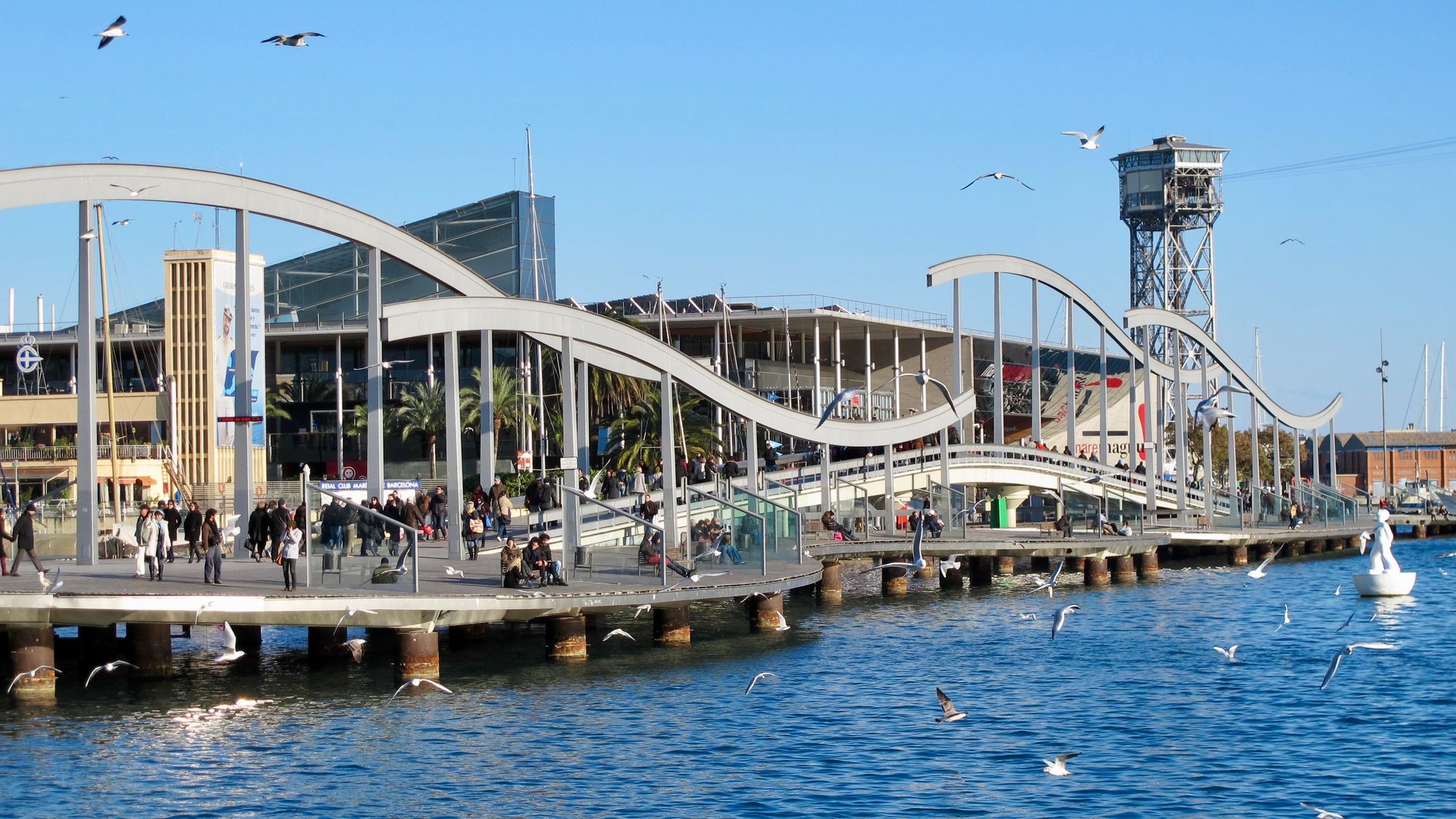
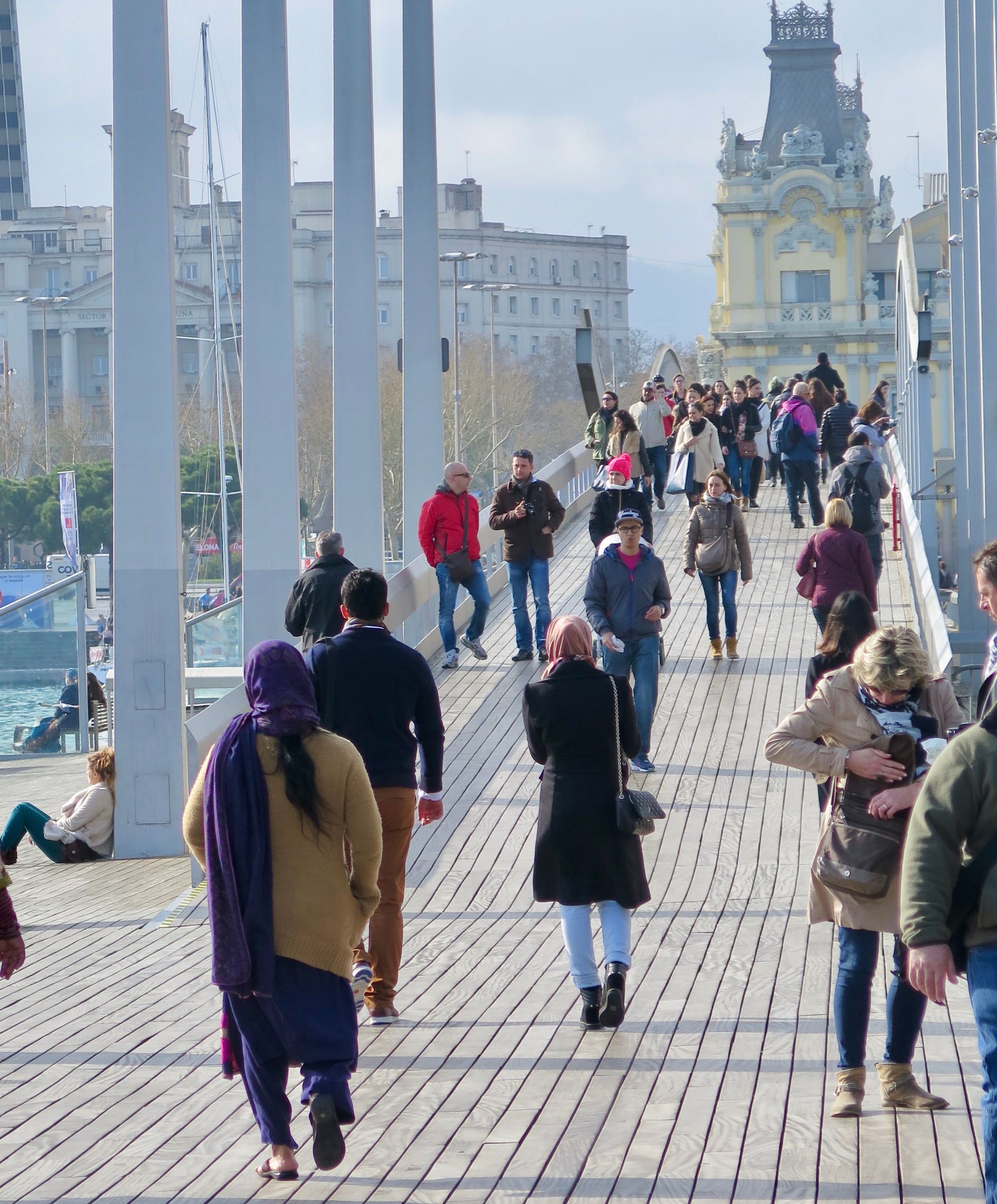
About the Author: George Semler
Growing up in New England and educated at Yale, George Semler has lived in Barcelona since 1975. He spent four years as a Marine infantry officer with a year as a rifle company commander in Vietnam before moving to Madrid in 1970 to become a writer. In 1973 he relocated to San Sebastián to coach and play ice hockey, and then accepted an offer from the FC Barcelona to create an ice hockey program in the Catalan capital.
Semler went on to publish six books on Barcelona and one on Madrid while authoring guidebooks for Fodor’s Travel Publications on all parts of Spain, France, Morocco and Cuba. Semler has written on food, wine, travel, hunting and fishing in SAVEUR, Forbes, SKY, Gray’s Sporting Journal, The Wall Street Journal, The International Herald Tribune, Attaché, Epicurious.com, The Los Angeles Times and other publications.
Related Reading
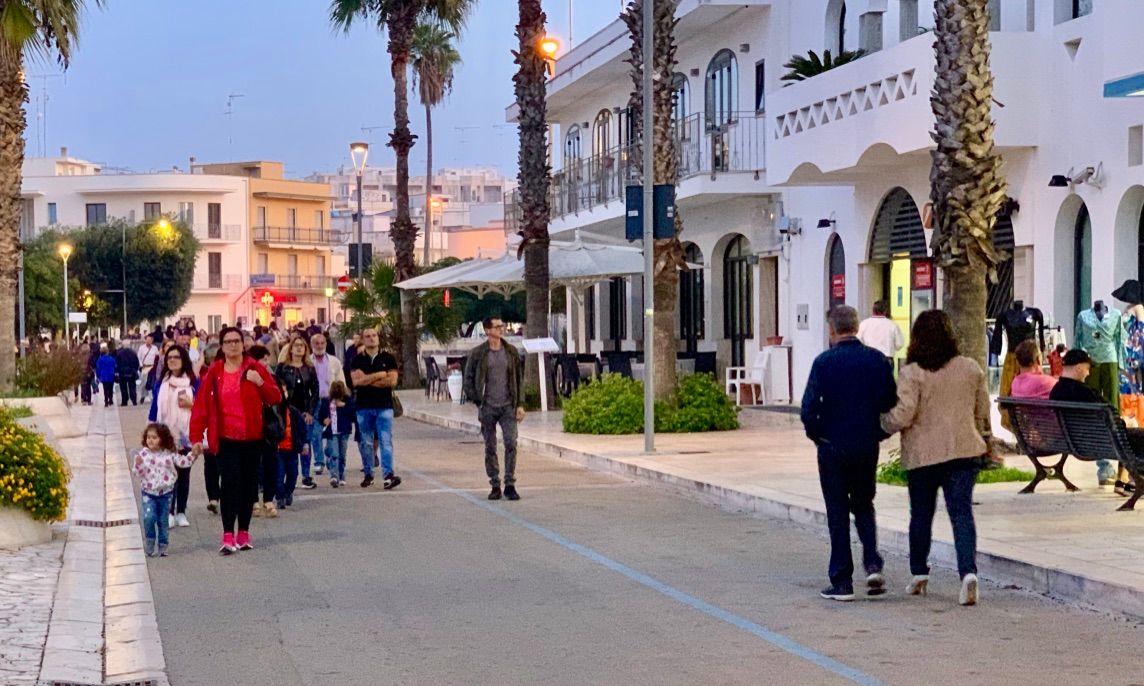
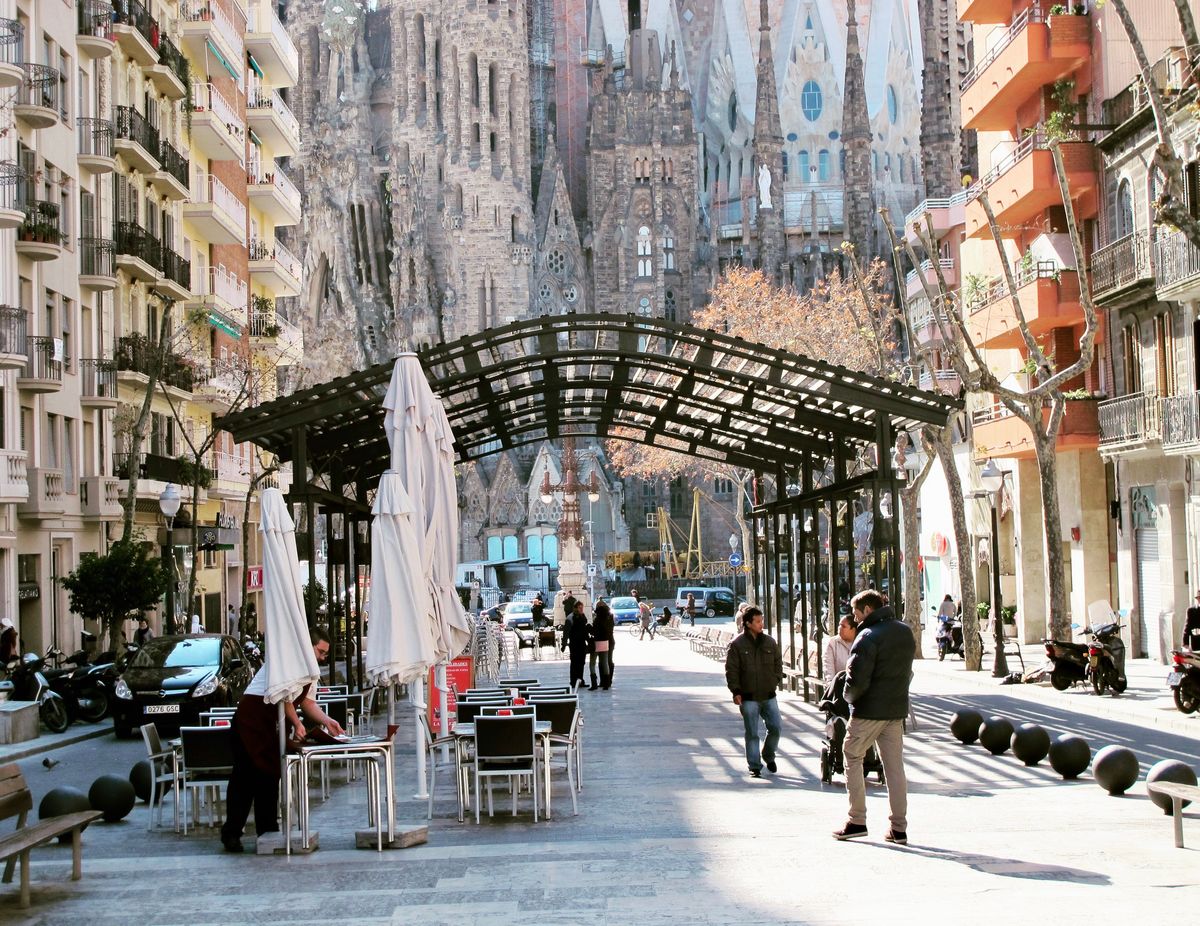
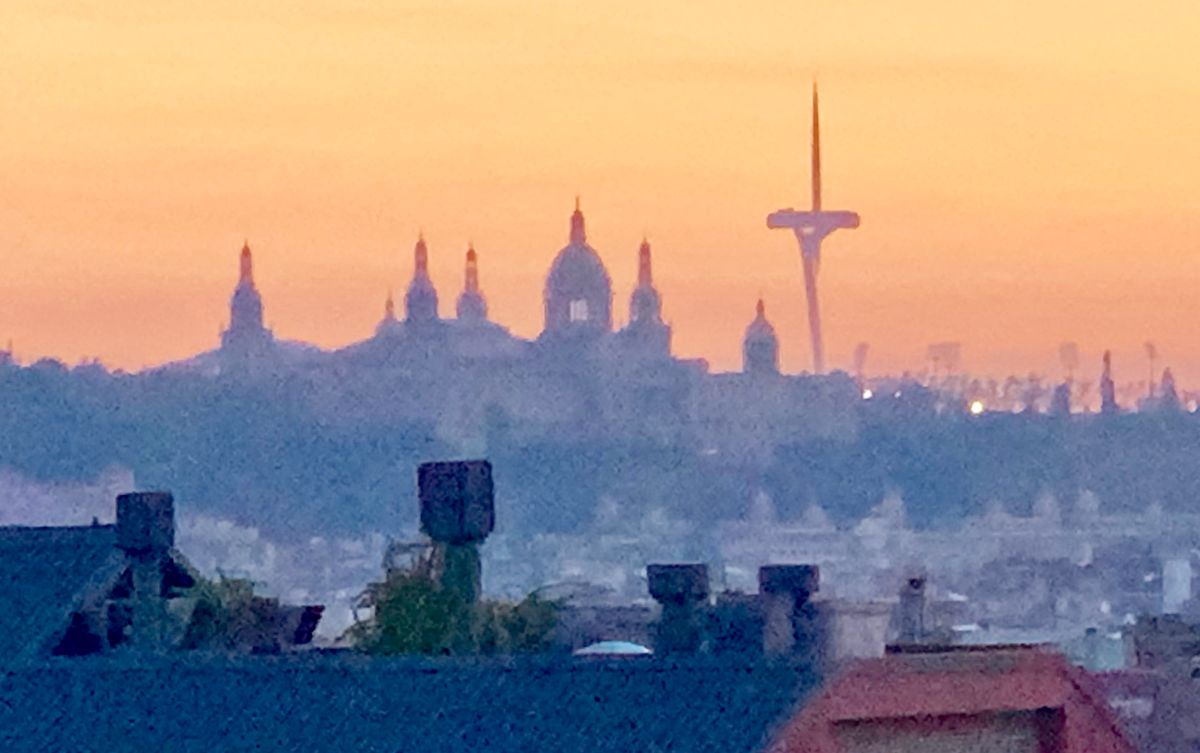
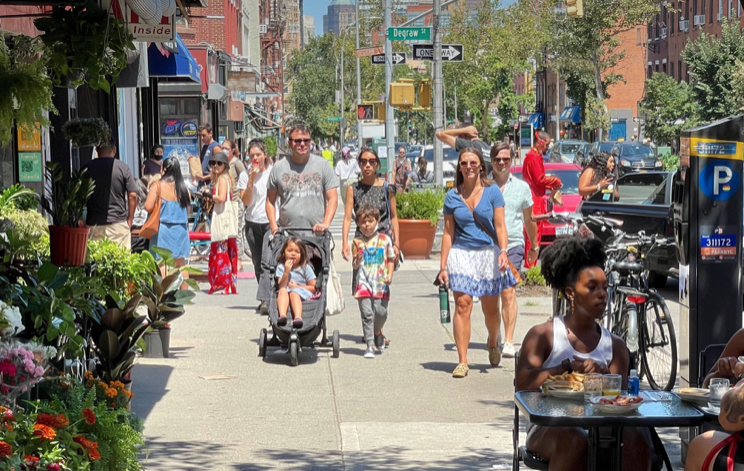
The Foundation and Future of the Placemaking Movement
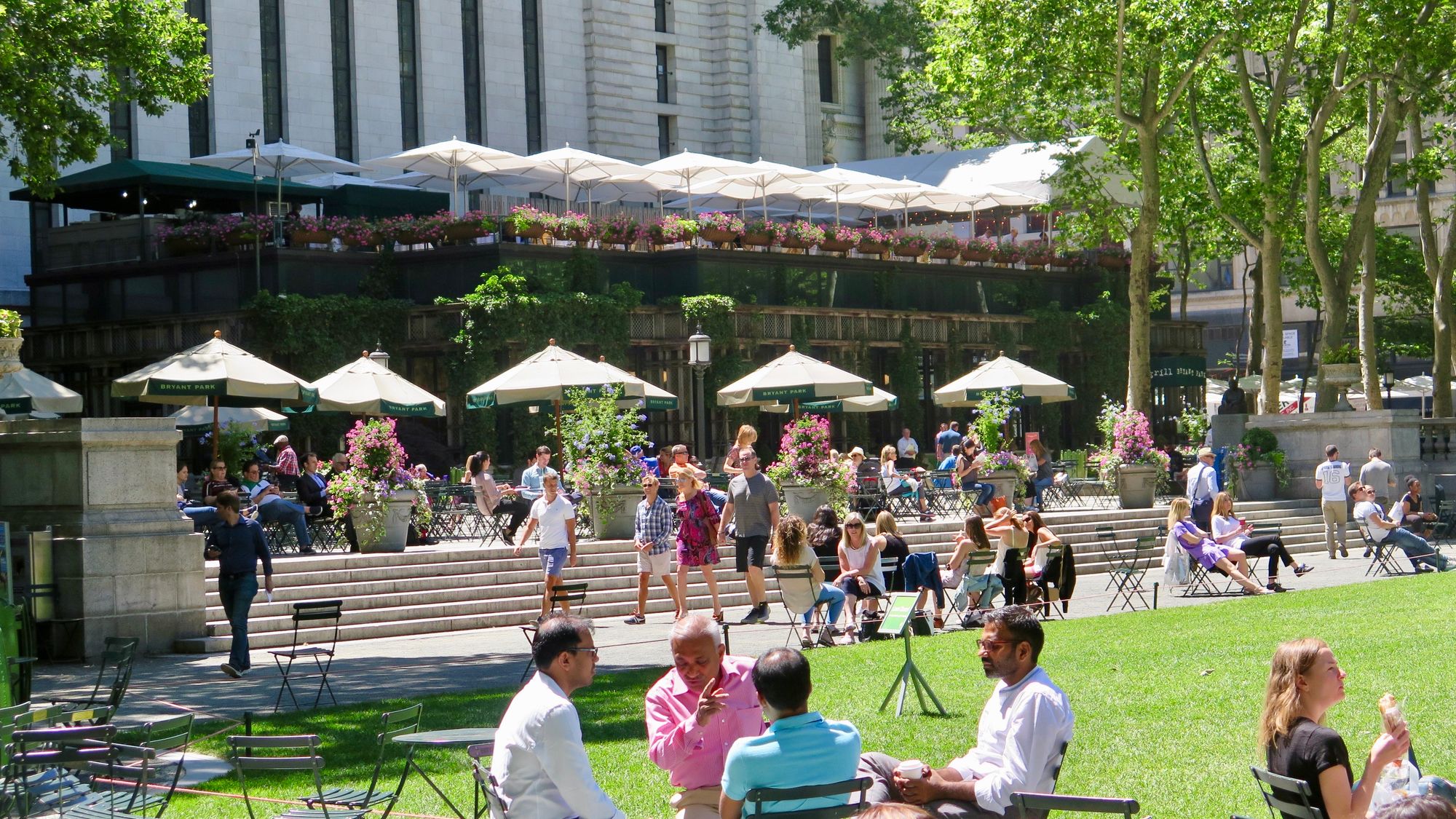
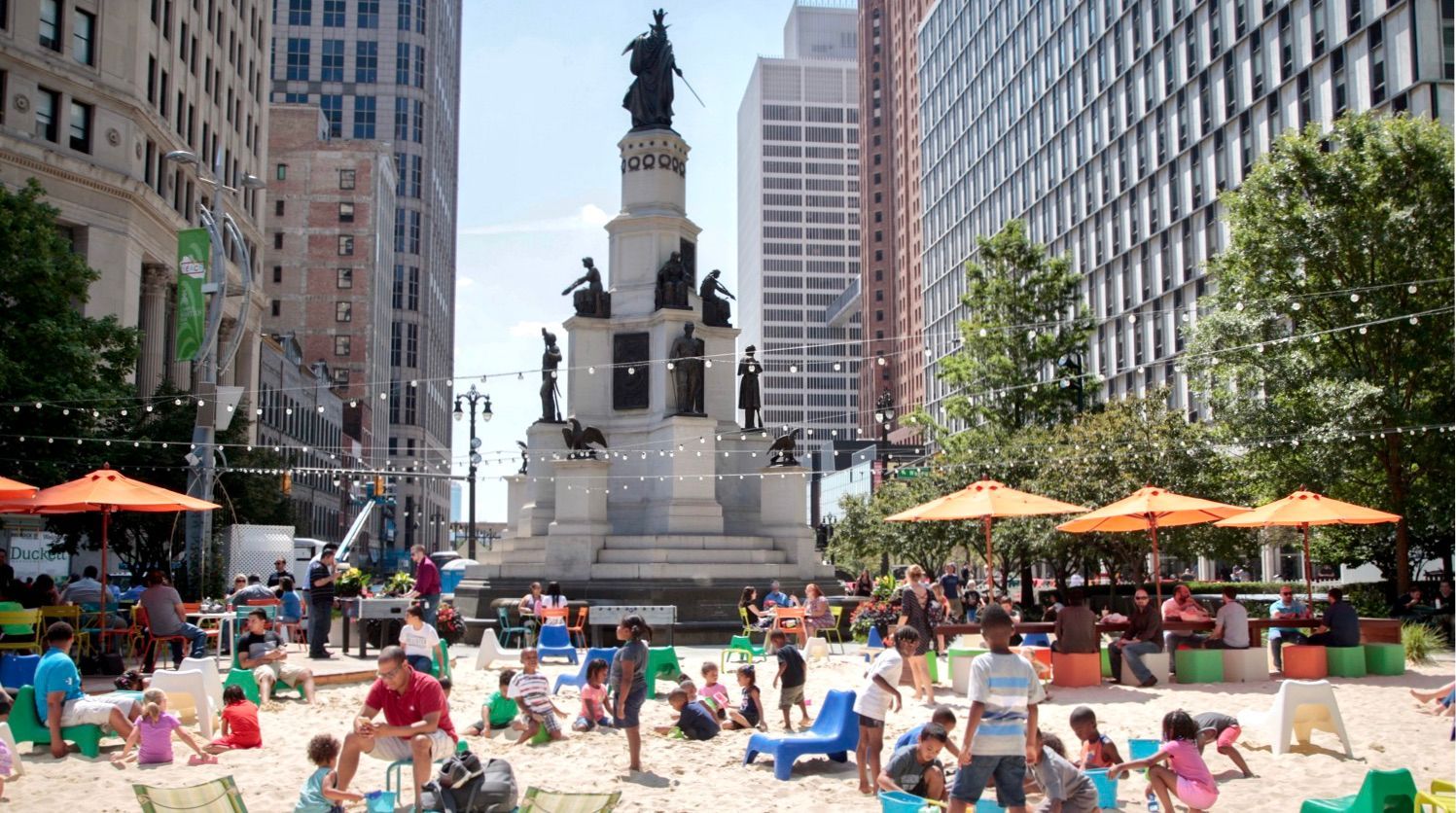
If you are interested in collaborating (articles, presentations, exhibits, projects, and more) or supporting the cause contact us.

